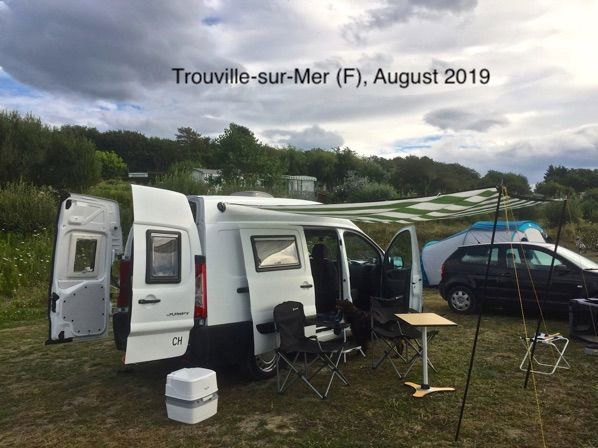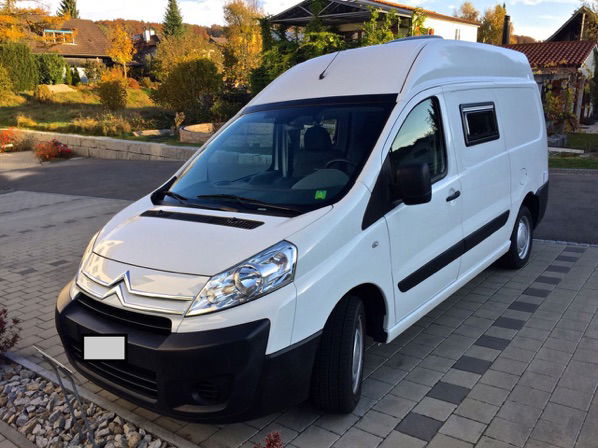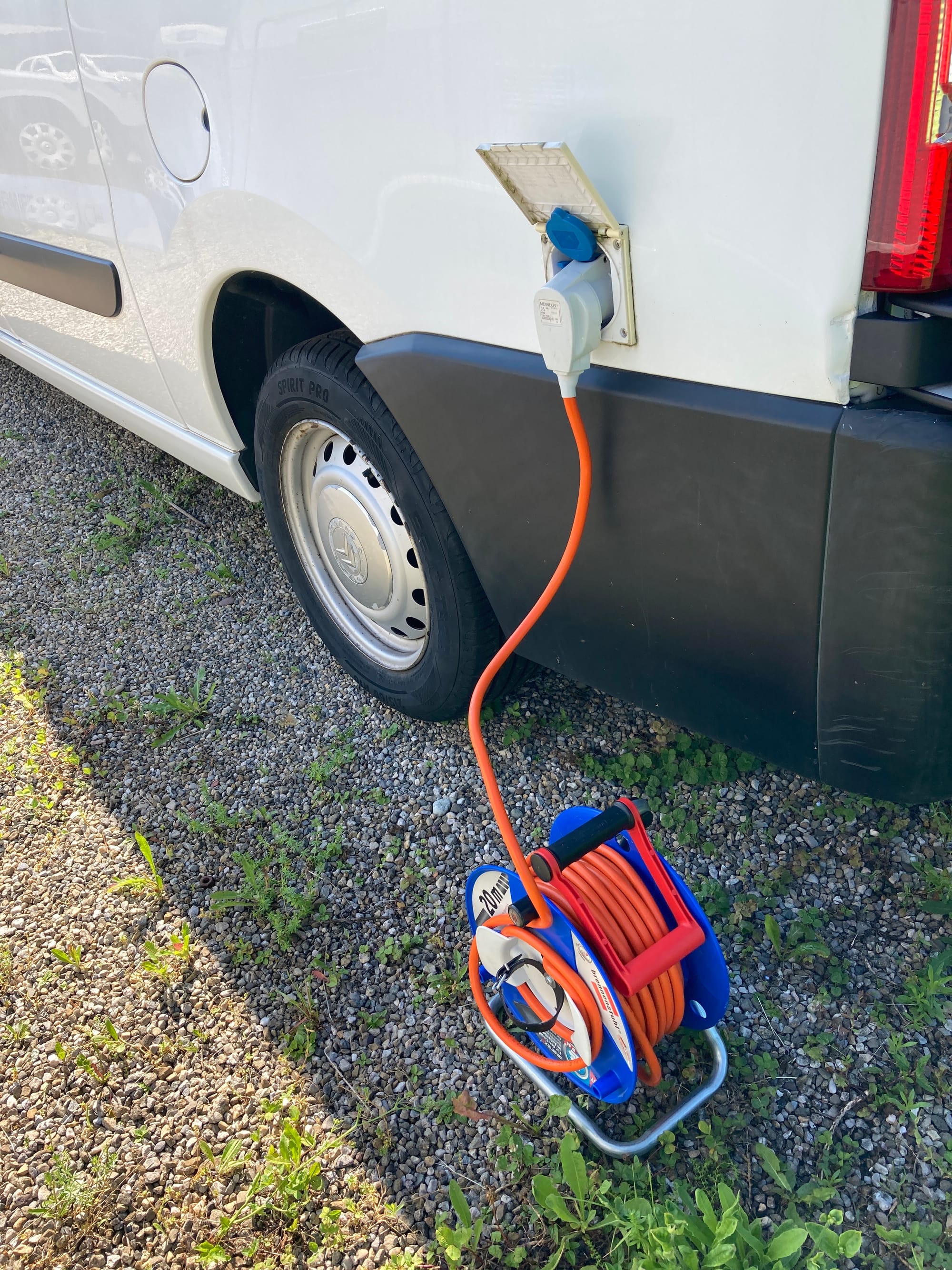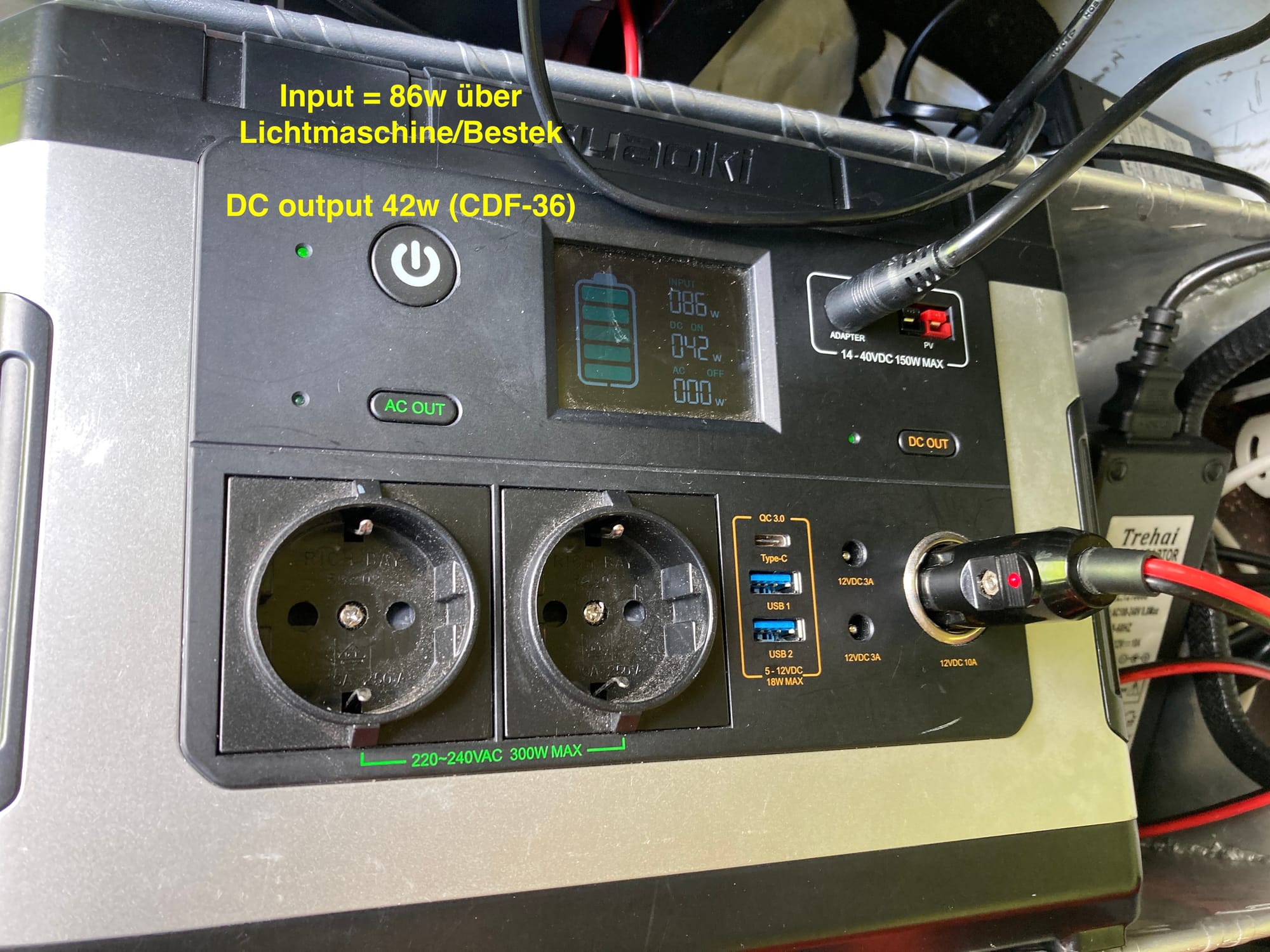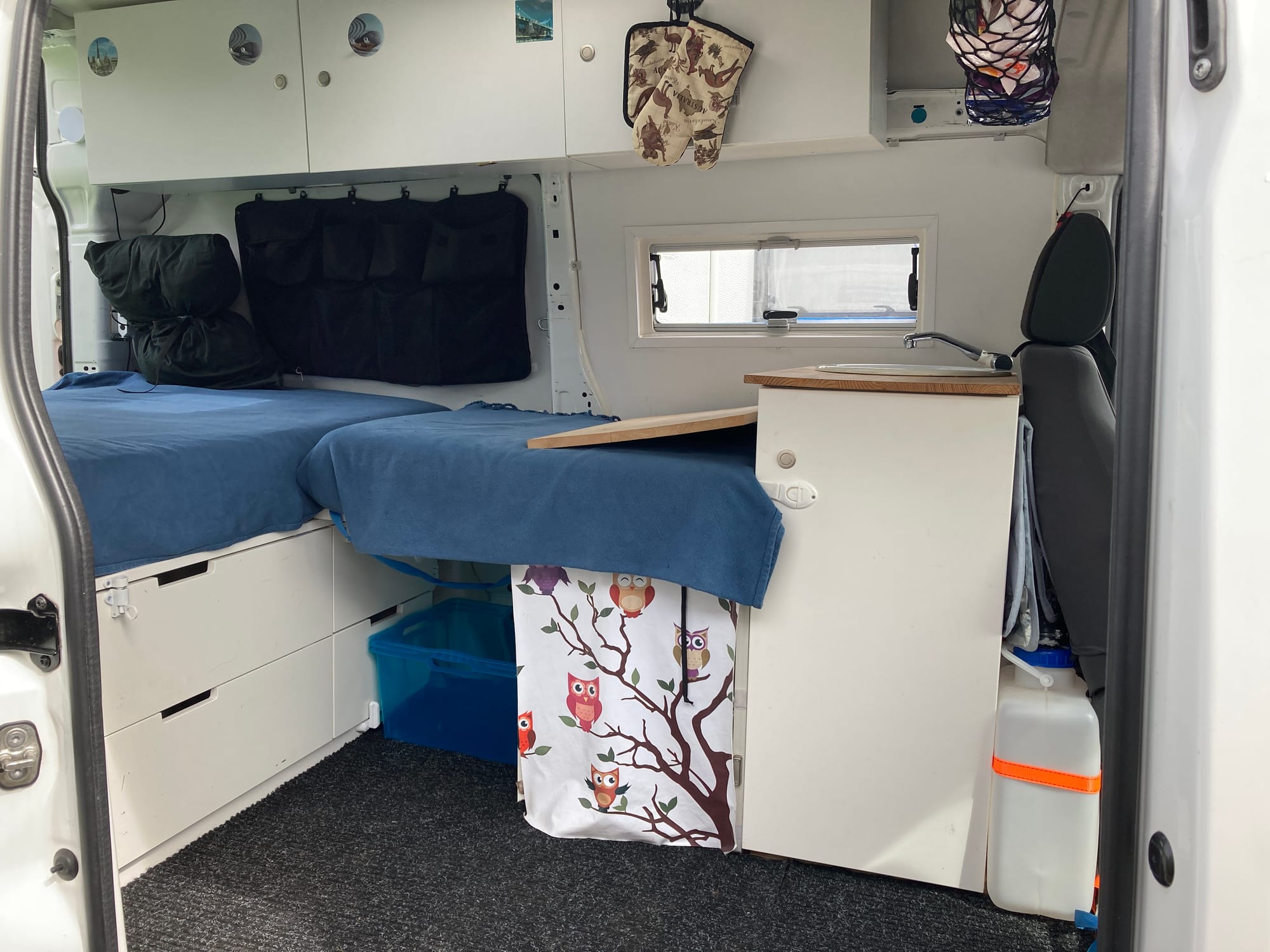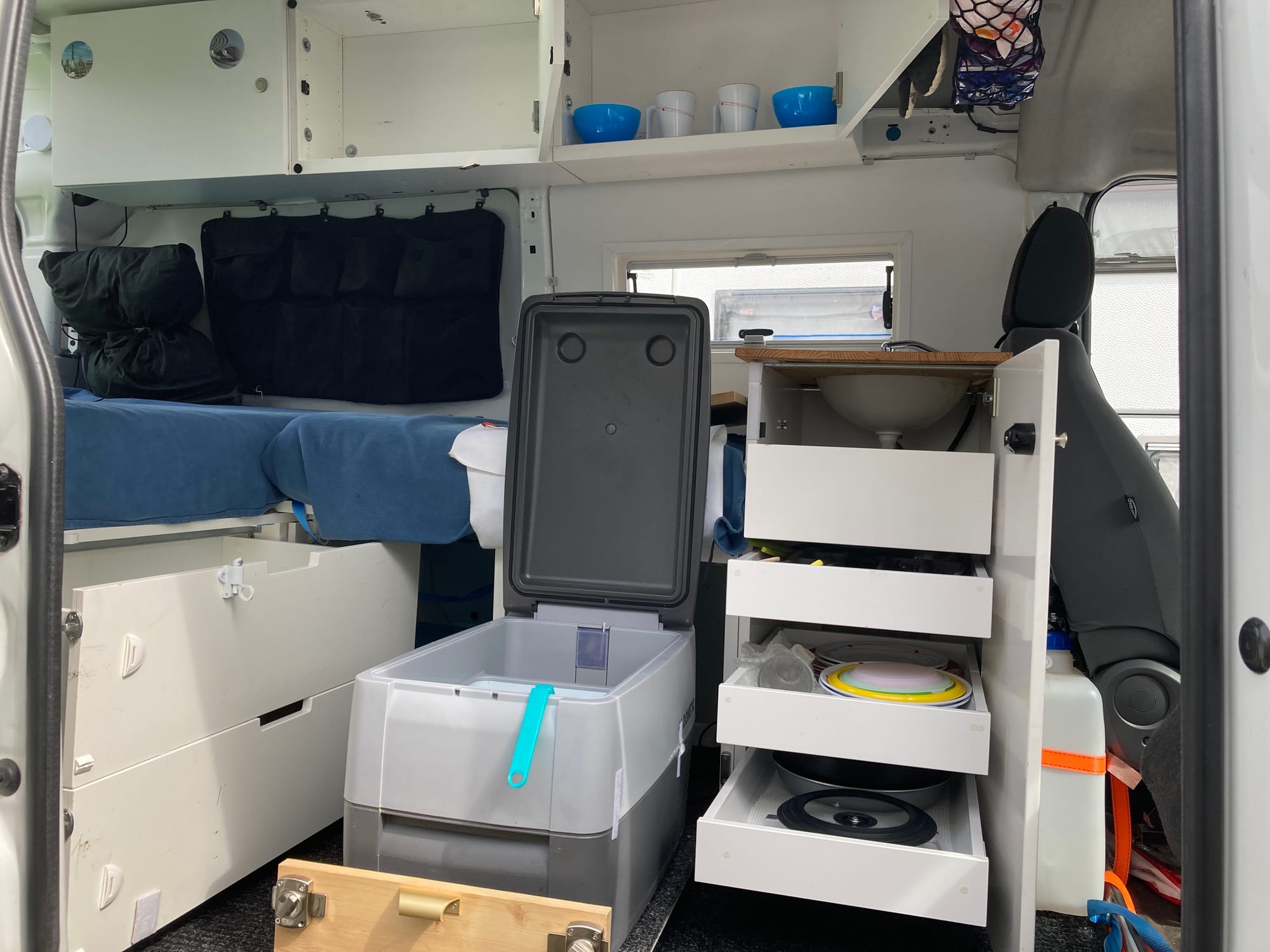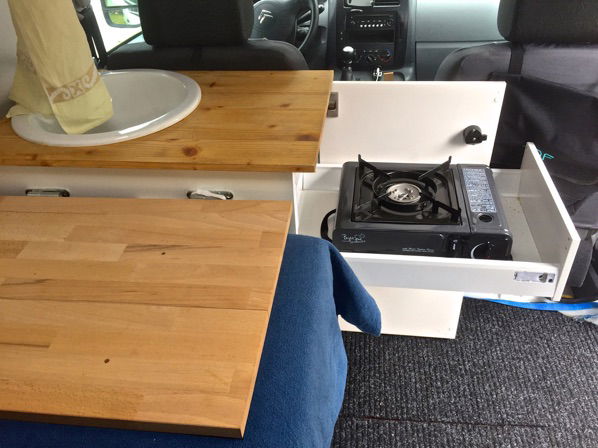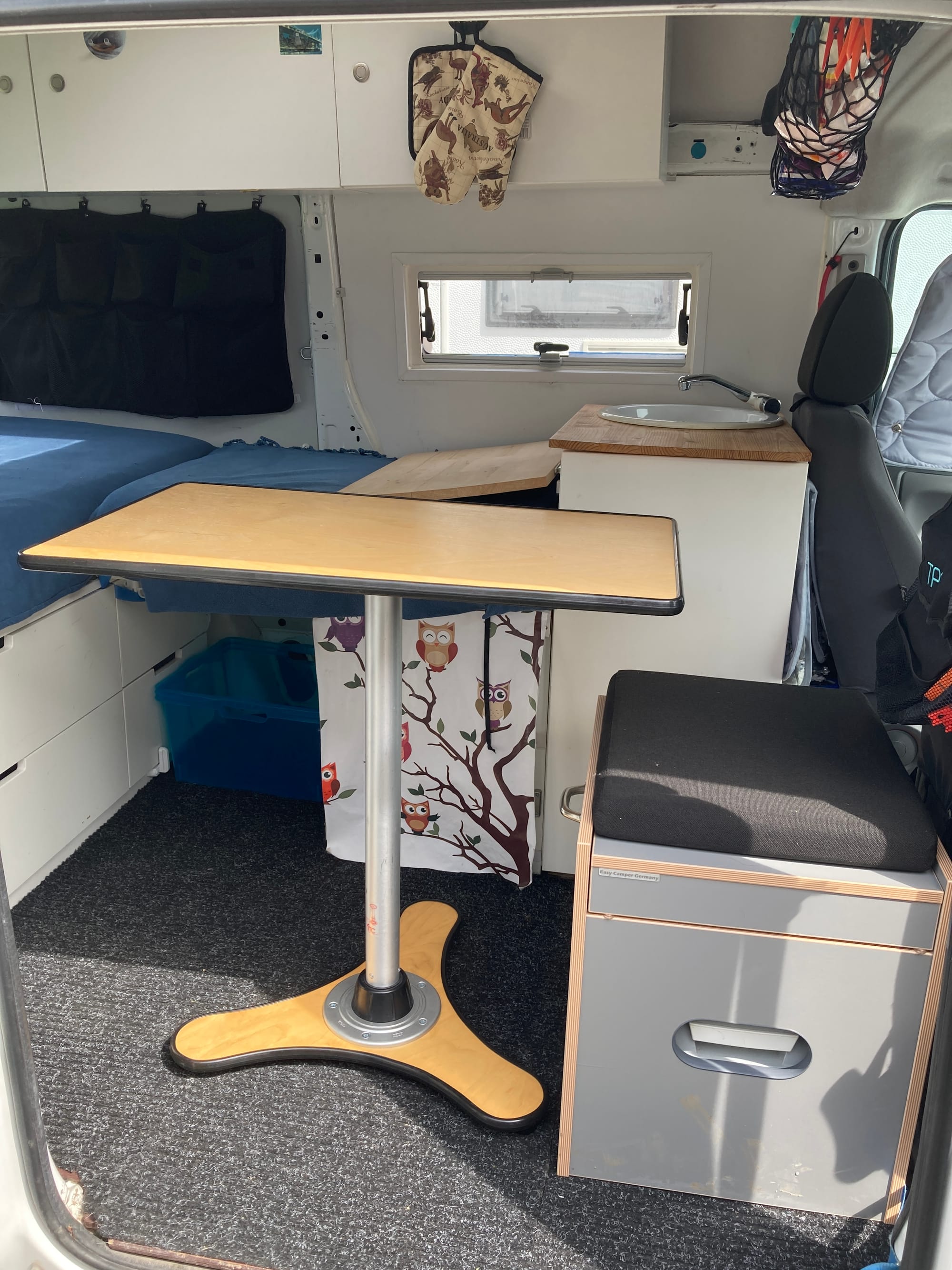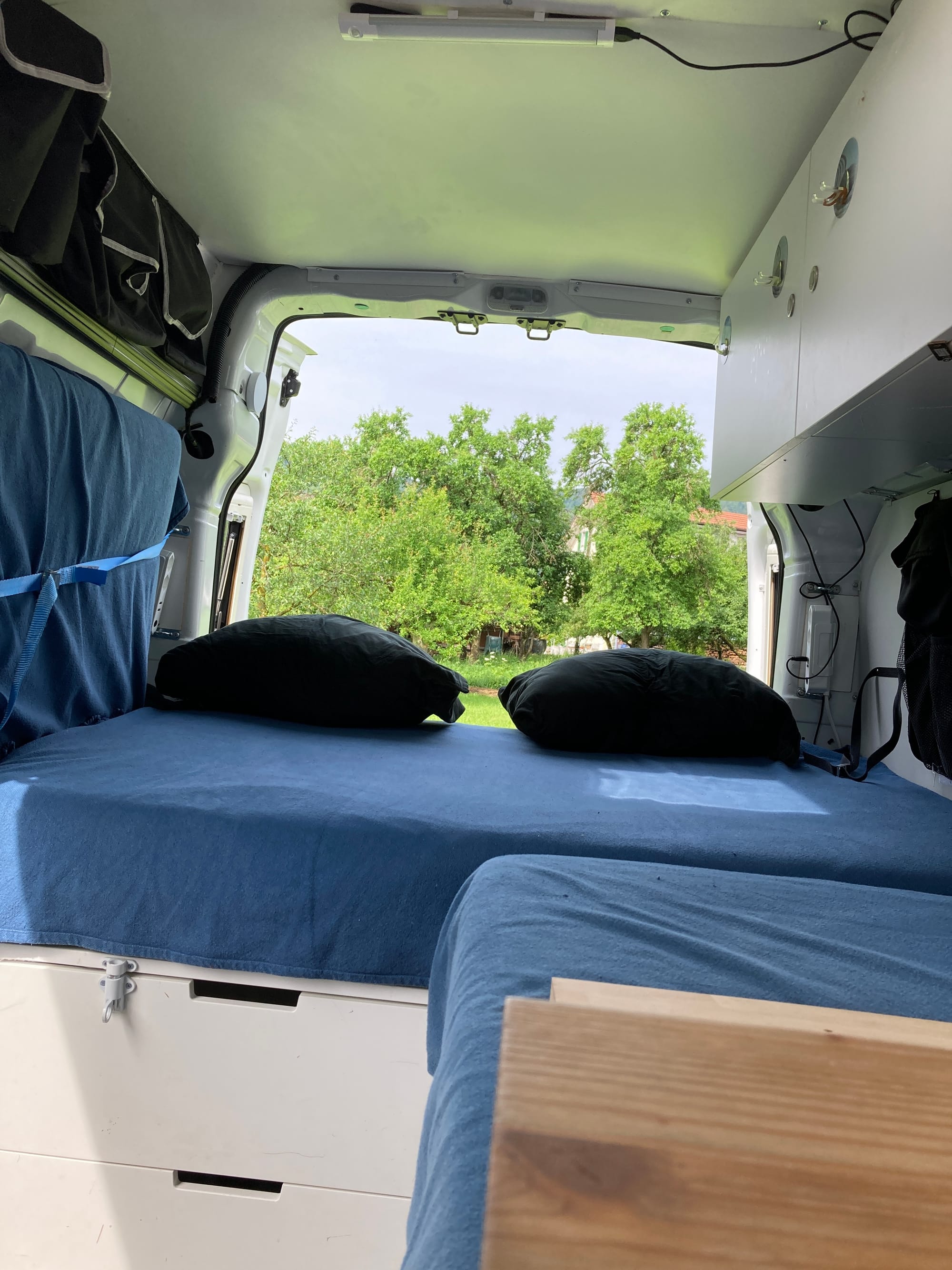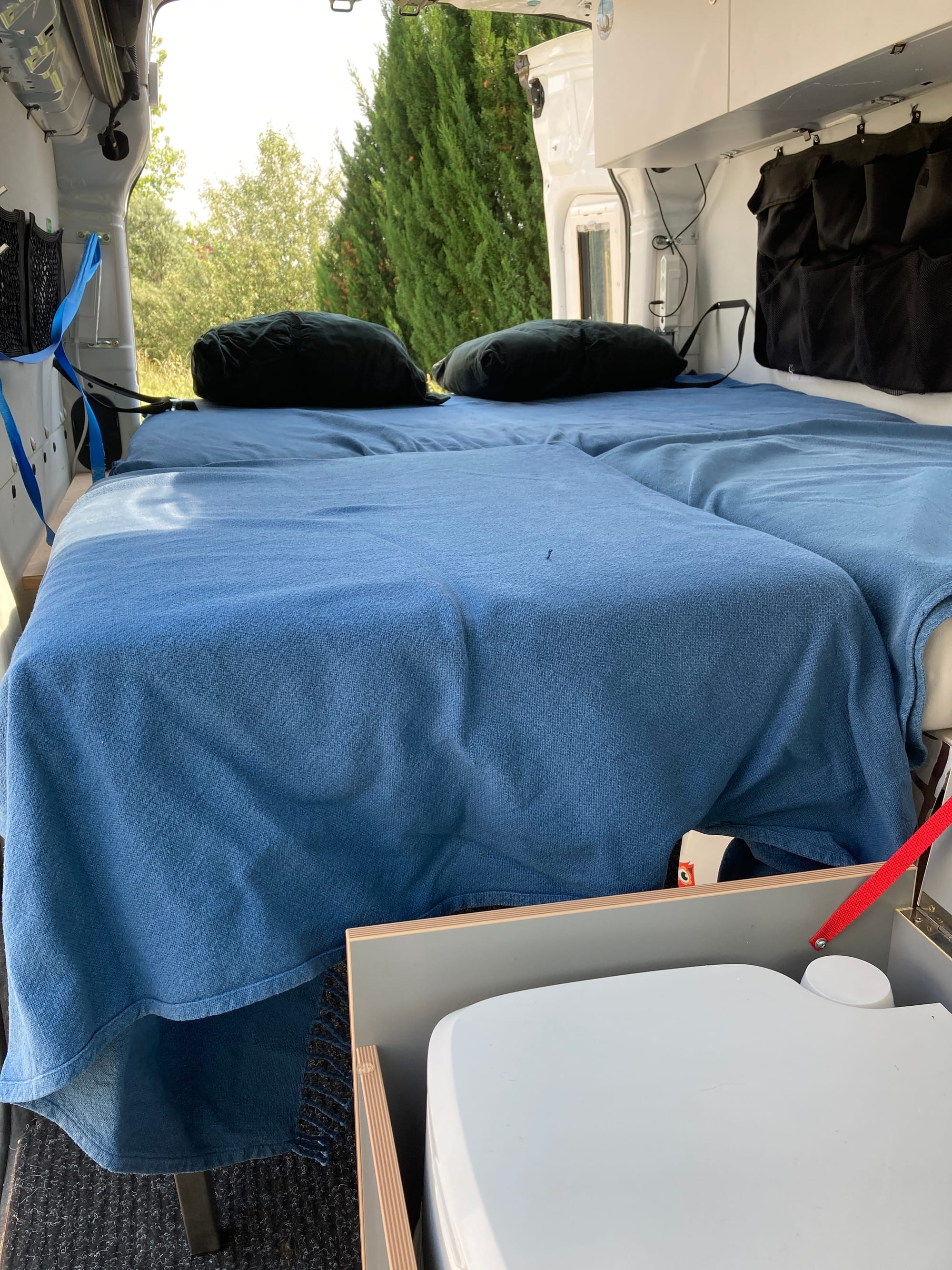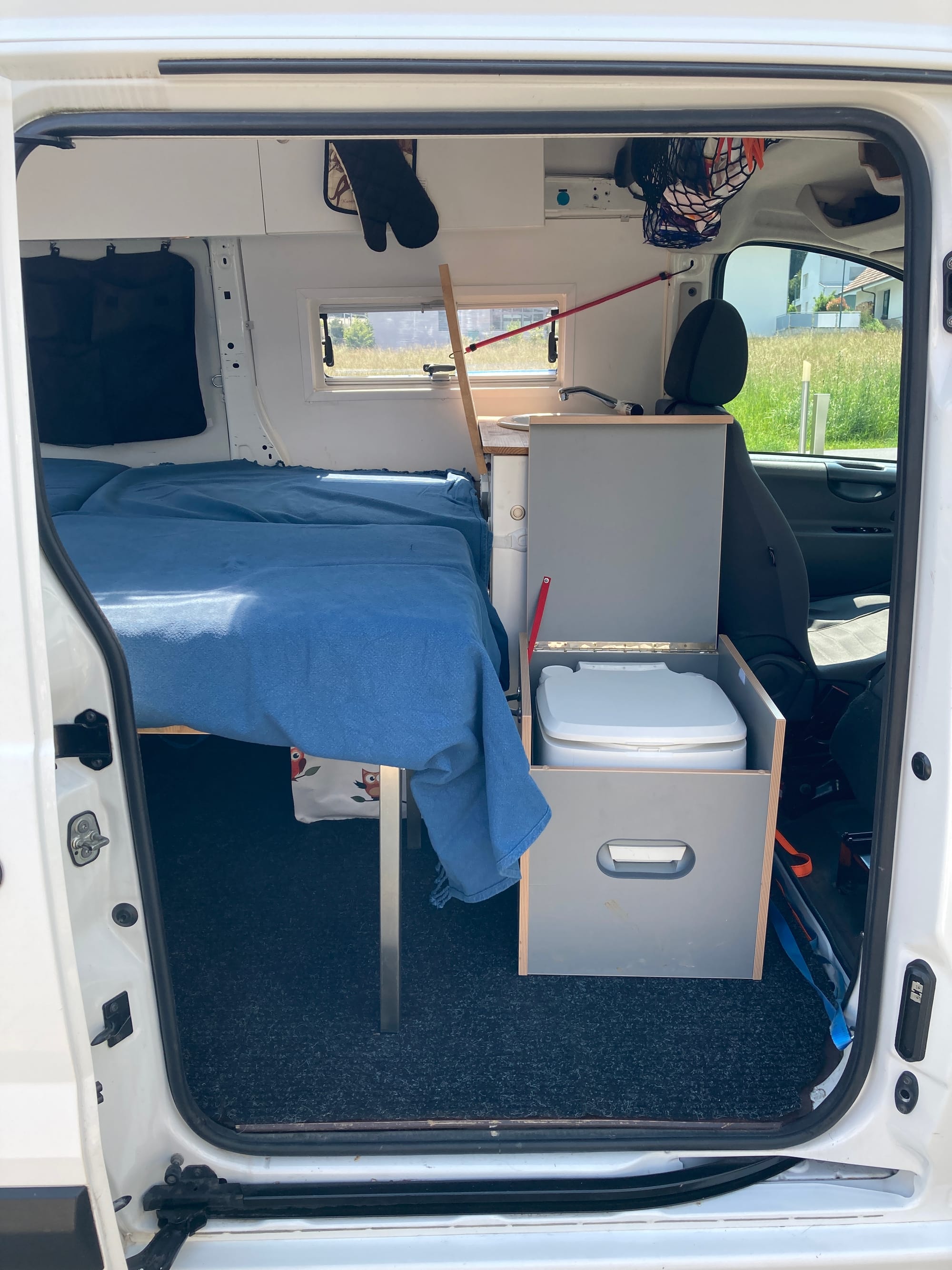Buzz's Place
Some interesting "papers" for dog professionals ...
and a couple of non-dog things.
Enter at your own risk.
Interested? ... terrific!
About me
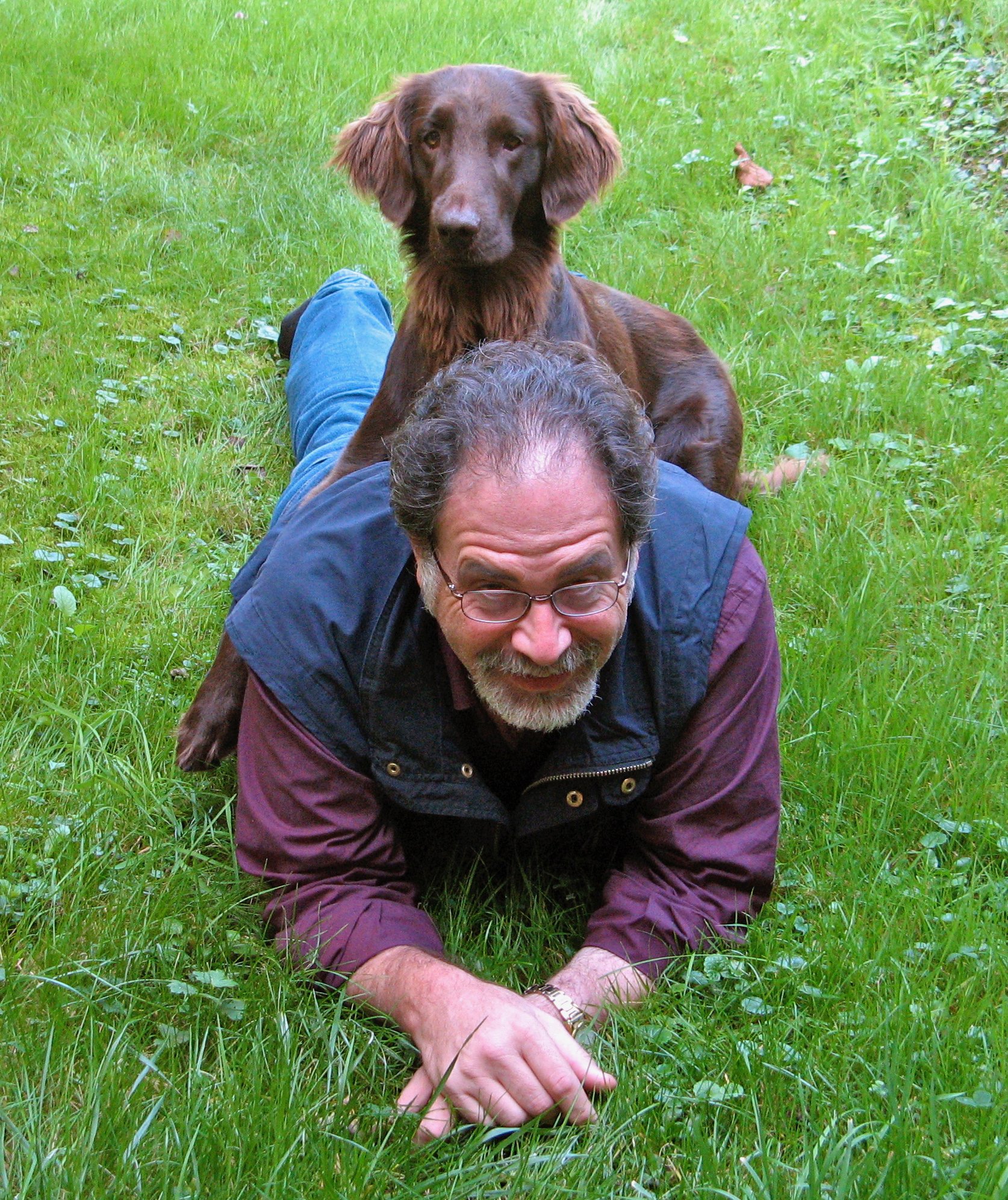 Leonard "Buzz" Cecil, was born of American parents near Swindon, England in 1952. The family moved first back to Tacoma (WA), and then settled in San Francisco. He then went on to the University of Cincinnati College Conservatory of Music where he graduated in 1974 with a Bachelors of Music Education and taught elementary band for 7 years in the Cincinnati area. He then left -for one year- (that plan worked out well) in 1977 to study Baroque Trumpet at the Schola Cantorum Basiliensis der Musik-Akademie der Stadt Basel, Switzerland. He's been living in Switzerland ever since. In 1980 he was hired by the Musik-Schule (Prep. Dept.) of the Musik-Akademie der Stadt Basel, first as a trumpet teacher, then ensemble conductor and later as conducting teacher, also at the Conservatory division. In 1995 he founded the Basel Trombone Quartet. Doing an about face in 2001, he was hired as "mostly Mac" System Engineer at the College for Industrial Design and Media Art in Aarau, Switzerland but moved on in 2008 to a similar position at the Ethnological Seminar at the University of Zürich. As if that weren't enough, after completing his Bachelors of Music Ed in 1974 and teaching in Cincinnati/Basel, he gave up the trumpet, got a Graduate Conducting Diploma from the University of Calgary (1988-1990) and earned in 1996 a Teaching Diploma for Trombone and Euphonium from the Konservatorium der Musik-Akademie der Stadt Basel
Leonard "Buzz" Cecil, was born of American parents near Swindon, England in 1952. The family moved first back to Tacoma (WA), and then settled in San Francisco. He then went on to the University of Cincinnati College Conservatory of Music where he graduated in 1974 with a Bachelors of Music Education and taught elementary band for 7 years in the Cincinnati area. He then left -for one year- (that plan worked out well) in 1977 to study Baroque Trumpet at the Schola Cantorum Basiliensis der Musik-Akademie der Stadt Basel, Switzerland. He's been living in Switzerland ever since. In 1980 he was hired by the Musik-Schule (Prep. Dept.) of the Musik-Akademie der Stadt Basel, first as a trumpet teacher, then ensemble conductor and later as conducting teacher, also at the Conservatory division. In 1995 he founded the Basel Trombone Quartet. Doing an about face in 2001, he was hired as "mostly Mac" System Engineer at the College for Industrial Design and Media Art in Aarau, Switzerland but moved on in 2008 to a similar position at the Ethnological Seminar at the University of Zürich. As if that weren't enough, after completing his Bachelors of Music Ed in 1974 and teaching in Cincinnati/Basel, he gave up the trumpet, got a Graduate Conducting Diploma from the University of Calgary (1988-1990) and earned in 1996 a Teaching Diploma for Trombone and Euphonium from the Konservatorium der Musik-Akademie der Stadt BaselBuzz grew up with dogs, albeit training way back then played no real role, more than teaching a sometimes "sit". In 1999 the family adopted Luna, a Greater Swiss Mountain Dog mix. "Modern" gentler (so-called “balanced”) methods were just getting started then, so rewards and praise were mixed with the leash pops, loud, louder and loudest commands and alpha rolls. Luna was, in spite of all that, a super dog, but left much too early at age 8 1/2.
Then came Vela, his first pure-bred (all others had been rescues) - a Flat-Coated Retriever. Vela is a beauty but because of her character, she forced Buzz to seek other methods. He stumbled across Clicker Training as a great “new” start. Buzz did his version of Canine Freestyle with Vela (started with help from Claudia Moser) while his wife did Dummy work with Vela. Buzz & Vela later moved on to IPO/Schutzhund, trained in dog-friendly manner. Vela is now, since 18. July, 2021, waiting patiently at the Rainbow Bridge. She left us at the ripe old age of 13.5 years.
Thanks to Vela, he expanded his already broad-based dog-knowledge through studies for the Certificate Canine Behavior Science and Technology (CBST) from James O’Heare’s Companion Animal Sciences Institute - certificate completed in 2012. This is a combination program covering dog training and behavior modification. In 2012 he also completed the first ever Swiss Clicker Trainer certification course under Claudia Moser and Simone Fasel. In March 2013 he completed the Behavior Adjustment Training (BAT) 5-day Instructors’ Course in Schwäbisch Hall (D). Attendee at the first european Clicker Expo, October 2014 Bromley Cross, Lancashire (UK). He's a Certified Trick Dog Instructor (CTDI) and a Trick Dog Champion, both programs run by Kyra Sundance, Do More With Your Dog. During this time he however became less and less a "Clicker Trainer", keeping it though in his general toolkit, but instead expanded his knowledge to include other non-violent dog-friendly training methods - this after realising, that Skinner doesn't/didn't have a lock on learning, that there are MANY other different so-called "learning theories" out there (see the Articles sections here).
As mentors: Claudia Moser and Heike Westedt. Seminars/Lessons with Claudia Moser, Christine Szakacs, Hetty van Hassel, Dr. Ute Blaschke-Berthold, Heike Westedt, Mirjam Cordt, Susi Roger, Sabine Neumann, Grisha Stewart, Dr. Adam Miklosi, Dr. Ray Coppinger, Chirag Patel, Jane Killion, Emily Larlham, Manuela Zaitz, Dr. Susan Friedman (LLA course in Austria), Dr. Daniel Mills, Kay Laurence, Malena DeMartini-Price, Karen Wild, Sarah Whitehead, Gerd Schreiber, Ken Ramirez, Cecilie Koste, Dr. Claudia Fugazza, Markus Mohr, Shade Whitesel, Thomas Riepe, Dr. Patricia McConnell, and others.
Buzz is also an Apple Certified System Administrator (ACSA) which came in handy during his time as an IT geek at the colleges/institutes in Aarau and Zürich until his retirement in 2014. Since his retirement he could be found underway with Vela (until she passed on) near home or with his camper (Reisemobil), puttering about throughout Europe.
And now, Buzz's "new" 4-legged companion is Jares, a (at the time of this writing, April 2022) 10 year old Galgo Español (Spanish Wind Hound). Jares is like no other dog Buzz has ever had. A total Daddy's dog, Jares is though also his own dog. He doesn't so much as "obey", as much as he'll consider your request and act upon it (or not) at his leisure. On the other hand, as a Daddy's dog, he's also a Velcro dog, so a "recall" in the classic sense is totally unnecessary. He'll come when he wants to, but actually pretty much as reliably as any Retriever - just in a different style.
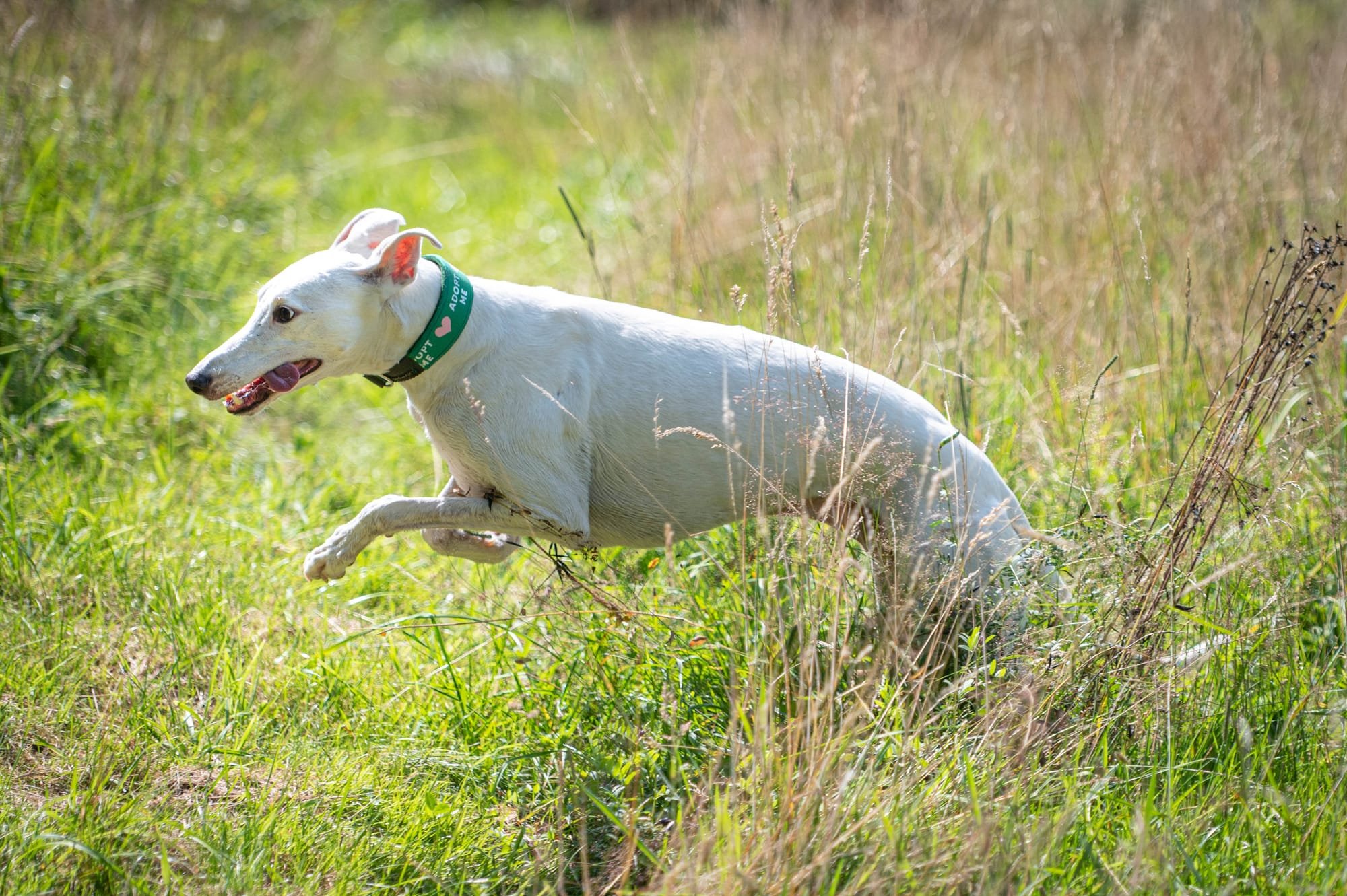
"You can live without a dog, but what's the point?"
Dog Articles
... with some “new”, evidence based tools. GET yours here (It’s really more of a 2-part book: Part 1 - Theory, Part 2 - Practice)
Read MoreThis article looks at some "givens" in dog training and a review of the actual peer-reviewed science which either supports or ... doesn't support them.
Read MoreIt would appear, that Skinnerian Radical Behaviorism is not the only thing out there that has to do with learning and performance of behavior. First clue: that I even separate the two from each other ... I'm not the only one doing so.
Read More"Drive" is one of those words that is not talked about in "modern" dog training circles, mainly because it doesn't really fit into Skinnerian Radical Behaviorism. But once outside of these circles in the "real world", drive is an word used to explain why the dog is doing something or not doing something. So, what is "drive" actually?
Read MoreWhat? Heresy?!? Well, my thoughts on this were nudged after a lecture by a well known dog researcher and dog trainer/owner put out this idea. But what is actually behind this idea or is it just B.S.?
Read MoreDone in 2012 at the Clicker Zentrum in Switzerland, this experiment looks at how much shock a human can stand when the subject applies it to various body parts: palm of the hand, wrist, arm, neck.
Read MoreExperiment 2 shows the results of the two most common forms of shock in training: +P and -R. ... plus +R (praise) as reward. Again, only human volunteers were used - and they were trained in a language they didn’t speak or understand: Turkish. The subjects were filmed and these videos were analyzed in terms of stress signs given by the subjects during the test, anticipatory signs as well as any other signs that could indicate emotional states. An interview was also conducted to get the subjects own reactions to the tests. Now available here.
Read MoreMy "Cocktail"
This page has NOTHING to do with dogs (WHAT!?!?!?) or trombones (whew!!), but rather with my "fight" with my idiopathic peripheral polyneuropathy and to a certain extent, my diabetes Type 2. So if you don't need this information, scroll on.
The information I put here is under the caveat, that I'm NOT a doctor, although I do link to quite a few peer-reviewed studies concerning the various "stuff" I've found that has helped me. The important word here is "me". I make no claims, that this will help you. If it does, terrific. And as always, before diving into this yourself, consult your doctor(s).
Now I know you didn't ask this, but I'm gonna get it out there anyway. Many people would say in such a situation „I did my research...“. Well, I didn't. Why? Because my background in science is in the behavioral sciences, and I didn't have a white lab coat there. I didn't study implicitly the formats for researching and then writing up scientific findings. I DID however need to learn how to read peer reviewed studies and evaluate their methodological accuracy in terms of form. I learned (what too few authors of peer reviewed papers do, especially in the animal behavioral sciences,) to backtrack cites in papers to see if what the authors claim can be found in previous work is actually … found in previous work. That can help explain where the present work came from, what it's based upon. And because I'm not doing papers that depend upon statistical results and relevancies, I never had to delve into the voodoo of statistics. So … I didn't „research“ anything here. I only searched available papers, read those which supported my „hypothesis“ as well as those that refute it, collated, and presented my findings.
First the "why". I was first diagnosed with Idiopathic Peripheral Polyneuropathy in 1999 after having been in the hospital for a leg thrombosis and lung embolisms. The doctors said, there was no connection. ...um, ok... It did take several months for the first neurologist to come up with that diagnosis. His prognosis: "Sorry, no cure, no relief, suck it up, buttercup". Well, not quite so brutal, but effectively that. This diagnosis was confirmed twice again in 2012 by two separate neurologists. I was also diagnosed with diabetes Type 2 in 2014, which was provoked by taking Spiricort (glucocorticoid) to combat Polymyalgia Rheumatica and I took Metformin since late 2014-2024, starting when my diabetes Type 2 was first diagnosed (see below). In November 2018 I had a heart infarct, was treated with stents and since then have been taking the following prescription medications for diabetes control and lipid control:
Ezetimib/Rosuvstatin-Mepha 10 mg/10 mg – 1-0-0-0 (Mo,Mi,Fr, So.)
Forxiga 5mg – 1-0-0-1
Aspirin Cardio 100 mg – 1-0-0-0
Metfin 1000 mg – ½-½-0-1 (discontinued in April 2024 as a test - see below)
Side note: I'm not a sweets/desert eater. Since 1973 I've eaten low-carbs (<50gr/day) and since around 2014 lower carb (<25gr/day).
And in the course of the next many years since 1999, the neuropathy got progressively worse. I had no sense of the floor under my feet, but had stabbing pains, electric shocks, cramps, depending upon the day, burning or freezing sensations in my feet and what I "like" to call "vice-grip" - my feet being held in a constricting vice-grip. It got to be pretty unbearable. My daughter, who is a doctor, recommended that I consult another neurologist, which I did. This new neurologist did about 3 hours of manual and electrical tests and found, that I not only had it in my feet, but also in my hands ... but I had almost no symptoms in my hands. Up until around 2021, my only symptoms in my hands were "the droppsies", meaning I tend to drop stuff ... but no pain. This neurologist sent me on to the big neurological guru at the local hospital who also ran his hours of tests including a lumbar puncture. His conclusion ... the same as hers. So, back with the neurologist, she first prescribed Cymbalta (SNRI class) and Gabapentine (anti-convulsant). The first couple of weeks were ok, but then the side effects started and now I know, that I had about 50-60% of the side effects possible, including brain fog, fatigue (also extreme, like suddenly falling asleep, like in the car or at work), phantom tastes, cognitive disturbances, sexual dysfunction. She switched out the Cymbalta for Effexor XR, but there was no improvement. And the effectiveness of the pain relief wasn't great. I still had many absolutely miserable days.
I then started pouring through Google Scholar for peer reviewed papers on neuropathy treatments and came across many using completely other substances. Some were small pilot studies, others full blown double blind placebo studies. It soon became apparent, that there were several substances, some that were readily available "over-the-counter", that had a good empirical track record. I started my own "experiments". I bought a bunch of these substances and made a record of how I felt. I then would exclude one or the other and see if I seemed to get worse, different or better.
What you see below is what I've settled on that works for me. I also listed a couple of substances that DO have good empirical results, but didn't seem to make any difference in my case, for example Hemp Oil and CBD oil.
Neuropathy is however a moving target. The symptoms I had 2 years ago are not the same as I have now. Basically, I now (see below) rarely have any cramps or stabbing pains, but the feeling of my feet being encased in a vice of cotton gauze with no contact to external conditions is much less prevalent and the numbness which had progressed to my thighs, has receded. My neurologist said after her testing November 2018, that I only had about 1/4 the sensitivity I'd had the year before in my feet. And once again a huge reduction in sensation in November 2019. But then and even still now, I've retained almost all of the strength in my legs, calves and ankles. The doctor had also diagnosed Carpal Tunnel Syndrome, without any symptoms presenting ... in 2013. That changed in 2021 as CTS symptoms started up big time - had the CT reduction surgery in May 2021 on my right hand - doesn't seem to be necessary in my left hand.
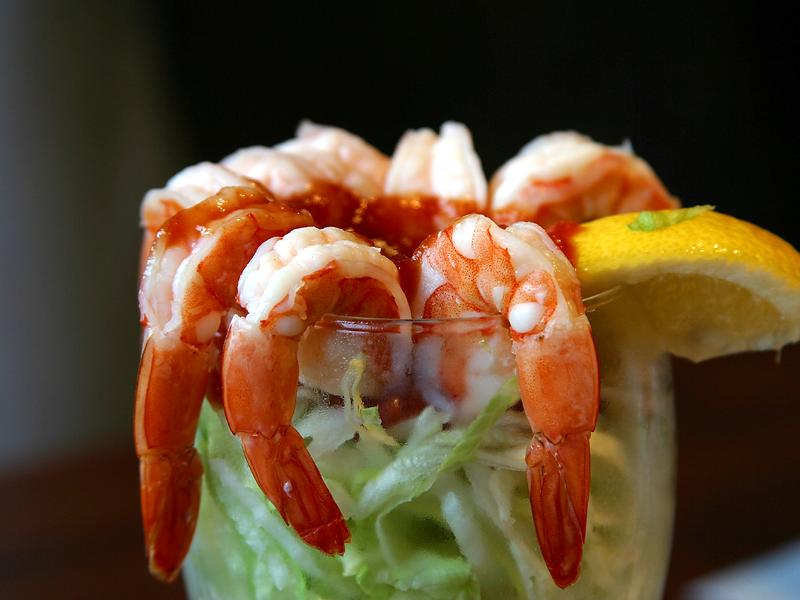
My “cocktail” as my neurologist calls it:
1-1-1-1 =
1 before breakfast
1 before lunch
1 before dinner
1 before going to bed
R-Lipoic Acid 300mg – 1-1-1-0
Acetyl-L-Carnitine 500mg – 1-0-1-0
N-Acetyl Cysteine (NAC) 750mg – 0-1-0-1 (stopped 01. June 2025)
Omega 3 (fish oil) – 1-0-1-0
Magnesium 100mg – 0-1-1-1
L-Citrullin 1250 mg – 1-0-0-0
Benfotiamine 300 mg – 1-1-1-1***
Dihydroberberine – 0-0-1-0 (reduced to this amount 01. June 2025, )***
*** - stopped as of 01. June 2025 due to taking Ozempic
I started Vitamin B1 Benfotiamine in August 2023 and the difference was immediate. Since the 2nd/3rd day, no more burning. No more pain. The "woolley sock-vice" feeling is decreasing. I've started taking the following, loosely based upon the study by Maladkar, M., Tekchandani, C. and Dave, U. (2014) listed below. It is one that is cited now in many meta studies having to do with investigating non-prescription neuropathy pain strategies:
Vitamine B6 P5P ca. 25 mg (see section on B6 below) 1-0-0-0
Vitamine B7 Biotin 2.5 mg 0-0-1-0
Vitamine B9 Folic acid 2.5 mg 1-0-0-0
Vitamine B12 Methylcobalamin 5000 mcg 1-1-1-0
The above neurotropic B-vitamin dosages (plus other substances) constitutes what I read, to be my "load dosages"**. I will try these Vitamin B substances until the end of June 2024 and slowly, gradually start reducing them until I find my so-called "maintenance dosages".. reducing only a couple at a time and seeing if, there is a worsening of my neuropathic discomfort. For example, I'll reduce the Benfotiamine from 600mg/day to 500mg/day. If that goes well over 2-3 weeks, I'll drop the B9 Folic acid from 5.1mg/day to 3.4mg/day. And so forth. ADDENDA: Last June I tried reducing the neurotropic B vitamins and ... the symptoms crept back in. So with approval of my GP and neurologist, I'm staying at these levels and I haven't had a "bad feet day" since October or so. Symptoms gradually disappearing (as of December 2024).
** - turns out, these dosages are "for the duration", inasmuch as when I reduce them, the symptoms start to return.
I have taken these in the past as well and they might help some people, I did not find, that I “missed” them, when I stopped taking them, but your mileage may vary...
cold pressed hemp oil –1000mg capsules 0-0-0-3
CBD oil (12% CBD), drops – 6-0-0-0 (actually before breakfast)
Vitamin D3, 5000 IU – 1-0-0-0
Borage Oil 240mg (GLA = Gamma Linoleic Acid) – 1-1-1-0
N.B. - this “cocktail” applies to and works for me. If you feel, it might be beneficial to you, please look at the research below and discuss this “cocktail” as well as this research with your doctor, inasmuch as I’m not a doctor.
NEWs from February 2024
As of today, 6. February 2024, both my GP and my neurologist have seen copies of my above list of substances and have signed off on them, so to speak. Today my neurologist did some tests of my balance as well as skin surface sensitivity. Yes, my thighs are no longer numb!! The numbness is still present below the knees, but I can now feel vibrations and feather touches down to the high ankle area, where ... the sensations stop. But this is a HUGE difference to August 2023, where this all was, simply to touch, - non-existent. What's interesting is - the researchers as well as my neurologist don't really know the why's or how's of this. There are theories, but ... haven't really been empirically proven. Why? Because in all the trials, almost all the participants experienced subjectively a very large reduction in neuropathic pain as I have or better, but in about half of them, electro-conductivity tests did not show any actual physiological improvement. So why did those participants still experience pain reductions, just like those whose tests did show physiological improvements? No scientific consensus. My neurologist is sceptical if my nerves have regenerated, especially not after almost 25 years. But results of her tests are ... as they are. Vast improvement over last August.
Next step, starting in July 2024, I will start, tiny step by tiny step, reducing the dosages, as written above, until I reach a maintenance dosage.
NEWs from March 2024
Today (26 March 2024) I saw my GP for my quarterly blood work. Sometimes it’s the full panel, sometimes just HbA1c and fasting blood sugar level – like today. Good news (relatively). No raise in HbA1c – still at 6.9, which theoretically still is high, but he’s satisfied. He’d said, that if it went above 7.3 and stayed there for a „longer period“, we’d have to think about „other options“, including, as he put it, a weekly injection of „something“ – I don’t remember if he actually named a name, but I suppose it would be something from the Ozempic family.
I had been taking 2gr Metformin/day since around 2014/2015 or so - often with sporadic GI distress. And have fought my way through various statins, two of which caused my neuropathy to flair up. I was able to find a statin and a dosage that keeps my LDL down and my HDL up, but not too far. Am taking now Ezetimib/Rosuvstatin-Mepha 10 mg/10 mg, once a day, three days a week and my last LDLs were „perfect“ as he said. More below ...
In the meantime, there is a lot of literature showing that Metformin can inhibit cellular absorption of Vitamins B6, B9 (folate) and especially B12 – and one sign of this is … you guessed it … neuropathy. And my feet have gotten so much better since August 2023, when I started taking B1, B6, B9 and B12 – see below. So I got to thinking and investigating. What else has an empirically proven track record of reducing blood sugar, fighting insulin resistence as well as keeping LDLs down? And I „found“ two substances:
Berberine (various forms) (reduced dihydroberberine 01. June 2025 to 0-0-1-0)
Myo-Inositol /with or without D-Chiro-Inositol. (stopped Inositol 01. June 2025)
Both have been shown to reduce HbA1c, fasting blood sugar levels, as well as reducing LDL levels and triglycerides. The jury is mixed concerning HDL – some studies showed increases in HDL (which, within limits is desireable) while others showed no change.
I started with Berberine while continuing to take Metformin – something that is even suggested for increased efficacy. Within 3 days I was having increased upper stomach pain and gas, which I often got from Metformin anyway, but also lower intenstinal cramping and increased need to … deficate. But my fasting sugar levels were a little lower: 6.2 - 6.5. After trying difference combinations of different forms of Berberine, with no improvements, I gave up, stopped taking Berberine HCL and switched to Myo-Inositol/D-Chiro-Inositol (as recommended 40:1 ratio). A short time later I stopped cold taking Metformin. That afternoon my stomach problems stopped and have stayed away - for the last 3 weeks (as of this writing, April 28, 2024). None since then. After having added Dihydroberberine, my fasting sugar has stayed consistently between 6.2 - 6.5 as it often was with Metformin/Berberine during the day with no return of stomach distress. This is the same level I had obtained with the Metformin/Berberine combination which my stomach didn't tolerate, so, unless proven otherwise, it appears, that the Berberine/Myo- & D-Chiro-inositol combination could be the way to go.
I related this concerning inositol to my GP and we’ve decided to try this combination of Myo-Inositol/D-Chiro-Inositol for 3 months without Metformin, while continuing on with the other B Vitamins and the Ezetimib/Rosuvstatin-Mepha (for lipids) and then do a large blood panel. He also mentioned, that if the Myo-Inositol/D-Chiro-Inositol doesn't have the positive effects that the studies have shown on LDL, he would recommend a PCSK9-Inhibitor such as Evolocumab instead of the Ezetimib/Rosuvstatin.
I might add, that my feet have never felt so well as now. All burning is GONE. All cramping is GONE. All electric shocks and tingling is GONE. The numbness has receded from mid-thighs to upper-ankles with very present sensitivity in my heels – I can even feel the fabrik and seams of my socks and the backs of my shoes. The vice-grip around my feet have reduced by 90% left and about 50% right if I even notice it at all. And more importantly: I can DO stuff with other people while sitting down, standing around or walking and … not constantly be feeling my feet. They just work now pretty much as advertised.
Below I have listed
1) some studies concerning side-effects of Metformin concerning B vitamins
2) some studies comparing metformin with other substances concerning relative efficiency
3) Berberine and diabetes
4) Inositol (Myo- & D-Chiro-Inositol)
NEWs from June 25 2024
Well the lab results were not as good as hoped for. Not that the inositol/berberine isn't working, they just are not working better than Metformin. LDL was 1.7 3 months ago. Now LDL was 2.2. HbA1C was 6.9 three and six months ago, but was now 7.3. Not the first time it was 7.3. So I'm NOT stopping statins - they're not "bothering" my feet anyway as my feet are still getting better and better. And I will continue taking the inositol/berberine as I'm otherwise feeling better than with metformin. I've also got a Continuous Glucose Monitor I'm wearing for the next 4 weeks and sporadically thereafter. I will continue my very-low-carb eating habits and exercise. And I'l resist any attempts at getting me to take ozempic or similar - and my GP doesn't seem to be opposed to that.
Addenda – July10 2024
I wore a Constant Glucose Monitor (CGM), a FreeStyle Libre 3, for the past two weeks and the results, as confirmed by my GP, are a relief. Although not "sterling", I was within "normal" glucose ranges 93% of the time, only experiencing raises right after breakfast (always consisting of 75gr hard cheese, 75gr sliced meat and coffee) which then receded during exercise at the gym or while walking the dog thereafter. Also a slight raise about 2 hours after dinner (which usually consists of a salad and a chicken breast or 3-egg omelette and coffee) - this also receded somewhere around midnight and stayed well in normal range until getting up in the morning. My average GMI (analog to HbA1c) was 7.0, which is acceptable. And this without metformin, but with inositol and berberine. I picked up two more CGMs and also ordered 3 CGMs from another company, Sibionics. Tomorrow I go on a 5-day road trip and am interested in seeing how the added exercise and "enjoying edible life" combine to effect my blood sugar. Then we're home until 27th July and then take off again for 8 days - then I'll have both monitors. My GP recommended I up my Ezetimib/Rosuvstatin-Mepha to 4 times a week and see if I experience any side effects. If not, up them once again to 5 times a week and check my LDL and triglycerides in September again.
Addenda – December 18 2024
CGM levels of 4.0 - 8.0 mmol/L and +/- 6.0% (GMI), Carb level still generally @ <25gr/day. When I do "enjoy life" in a culinary manner, for example a birthday party or family get-together, the spikes do get rather large, up to 12.0 mmol/L but also come down again after a few hours, so I just watch how often these periods occur.
LDL @ 1.2. So the combination of statin and inositol/dihydroberberine appear to be working on both levels. Will try reducing the stains in the coming months and will be measured again in March 2025.
Neuropathic symptoms still slowly receding. That means that surface sensitivity is returning to my feet to the point that my podological treatments are actually partially uncomfortable. In other words, bad news is good news. But activities are rarely negatively affected by neuropathic discomfort.
Addenda – April 04...06 May 2025
The last labs were ... ok. Lipids were in a good range, but HbA1c levels were creeping up. The time before it was 7.3, this time it was 7.4. So my GP and I decided to start Ozempic @ 0.25mg/week - the diyfhdroberberine and inositol were still working, just not efficiently enough. The CGM readings have, since starting Ozempic, gone back down to average of 5.9 mmol/L and GMI also 5.9 mmol/L, which is lower than it had ever been before Ozempic. And that despite reducing both diyfhdroberberine as well as Inositol to 0-1-1-0. Side effects of Ozempic are minimal - slight indigestion if I eat a snack mid-morning or mid-afternoon, which goes away when I drink water. The feet have been for the most part very good. Very few "bad foot days". The so-called "vice-grip" has turned into more of a pressure sock feeling, in other words, a slight pressure, not a squeezing. When I have the feeling of "cold feet", it's not painful, just ....cool and seldom a medium sensitivity behind the right big toe and/or at the middle right toes behind the nails. And this usual reduces when I walk, so does not negatively impede my daily life. Mini-steps forwards.
Addenda – June 11, 2025
Ozempic has been @ 0.5mg/week and I've found that, according to my CGM, my blood sugar levels are now at an average of around 5.5 mmol/L with high-points mornings after breakfast and after dinner topping out at around 6.2. Side effects have been manageable especially since I cut out Inositol and reduced dihydroberberine to 0-0-1-0. Feet have been improving and I've only very seldom had a small sensitive patch by a toe or on top of the right foot. So much bette than in January/February.
Studies
Alpha Lipoic Acid:
Tingting Han, Jiefei Bai, Wei Liu and Yaomin Hu, (2012) A systematic review and meta-analysis of a-lipoic acid in the treatment of diabetic peripheral neuropathy, European Journal of Endocrinology (2012) 167 465–471, https://www.ncbi.nlm.nih.gov/pubmed/22837391
Craig J. McMackin, Michael E. Widlansky, Naomi M. Hamburg, Alex L. Huang, Susan Weller, Monika Holbrook, Noyan Gokce, Tory M. Hagen*, John F. Keaney Jr., and Joseph A. Vita, (2007) Effect of Combined Treatment with Alpha Lipoic Acid and Acetyl- L-Carnitine on Vascular Function and Blood Pressure in Coronary Artery Disease Patients, J Clin Hypertens (Greenwich). 2007 April ; 9(4): 249–255. , https://www.ncbi.nlm.nih.gov/pmc/articles/PMC2734271/
Ziegler D, Reljanovic M, Mehnert H, Gries FA. (1999) Alpha-lipoic acid in the treatment of diabetic polyneuropathy in Germany: current evidence from clinical trials. Exp Clin Endocrinol Diabetes. 1999;107(7):421-30., https://www.ncbi.nlm.nih.gov/pubmed/10595592
D. Ziegler, H. Nowak, P. Kempler†, P. Vargha and P. A. Low, (2003) Treatment of symptomatic diabetic polyneuropathy with the antioxidant α-lipoic acid: a meta-analysis, 2004 Diabetes UK. Diabetic Medicine, 21, 114–121, https://onlinelibrary.wiley.com/doi/abs/10.1111/j.1464-5491.2004.01109.x
Andrew J. M. Boulton, Peter Kempler, Alexander Ametov, Dan Ziegler (2013) Whither pathogenetic treatments for diabetic polyneuropathy? DIABETES/METABOLISM RESEARCH AND REVIEWS
Diabetes Metab Res Rev 2013; 29: 327–333., https://www.ncbi.nlm.nih.gov/pubmed/23381942
Z. X. Poh* and K. P. Goh (2009) A Current Update on the Use of Alpha Lipoic Acid in the Management of Type 2 Diabetes Mellitus, Endocrine, Metabolic & Immune Disorders - Drug Targets, 2009, 9, 392-398, https://www.ncbi.nlm.nih.gov/pubmed/19601918
Giorgia Melli, MD,PhD, Michela Taiana, MS, Francesca Camozzi, MS, Daniela Triolo, MS, Paola Podini, MS, Angelo Quattrini MD, Franco Taroni, MD, and Giuseppe Lauria, MD (2008) Alpha-lipoic acid prevents mitochondrial damage and neurotoxicity in experimental chemotherapy neuropathy, Exp Neurol. 2008 Dec;214(2):276-84. doi: 10.1016/j.expneurol.2008.08.013. Epub 2008 Sep 9., https://www.ncbi.nlm.nih.gov/pubmed/18809400
Foster TS, (2007) Efficacy and safety of alpha-lipoic acid supplementation in the treatment of symptomatic diabetic neuropathy., Diabetes Educ. 2007 Jan-Feb;33(1):111-7., https://www.ncbi.nlm.nih.gov/pubmed/17272797
Linus Pauling Institute Micronutrient Information Center, Lipoic Acid, last update 2012, https://lpi.oregonstate.edu/mic/dietary-factors/lipoic-acid
Evangelos Agathos, Anastasios Tentolouris , Ioanna Eleftheriadou, Panagiota Katsaouni, Ioannis Nemtzas, Alexandra Petrou, Christina Papanikolaou and Nikolaos Tentolouris (2018) Effect of a-lipoic acid on symptoms and quality of life in patients with painful diabetic neuropathy, Journal of International Medical Research 2018, Vol. 46(5) 1779–1790, DOI: 10.1177/0300060518756540, https://journals.sagepub.com/doi/full/10.1177/0300060518756540
Acetyl-L-Carnitine
Di Stefano G, Di Lionardo A, Galosi E, Truini A, Cruccu G. Acetyl-L-carnitine in painful peripheral neuropathy: a systematic review. J Pain Res. 2019 Apr 26;12:1341-1351. doi: 10.2147/JPR.S190231. PMID: 31118753; PMCID: PMC6498091. https://www.ncbi.nlm.nih.gov/pmc/articles/PMC6498091/
Sima AA, Calvani M., Mehra, M., Amato, A. (2005) Acetyl-L-carnitine improves pain, nerve regeneration, and vibratory perception in patients with chronic diabetic neuropathy: an analysis of two randomized placebo-controlled trials., Diabetes Care. 2005 Jan;28(1):89-94., https://www.ncbi.nlm.nih.gov/pubmed/15616239
Craig J. McMackin, Michael E. Widlansky, Naomi M. Hamburg, Alex L. Huang, Susan Weller, Monika Holbrook, Noyan Gokce, Tory M. Hagen*, John F. Keaney Jr., and Joseph A. Vita, (2007) Effect of Combined Treatment with Alpha Lipoic Acid and Acetyl- L-Carnitine on Vascular Function and Blood Pressure in Coronary Artery Disease Patients, J Clin Hypertens (Greenwich). 2007 April ; 9(4): 249–255. , https://www.ncbi.nlm.nih.gov/pmc/articles/PMC2734271/
Youle M., Osio, M., ALCAR Study Group (2007) A double-blind, parallel-group, placebo-controlled, multicentre study of acetyl L-carnitine in the symptomatic treatment of antiretroviral toxic neuropathy in patients with HIV-1 infection., HIV Med. 2007 May;8(4):241-50., https://www.ncbi.nlm.nih.gov/pubmed/17461852
Sarah J.L. Flatters, Wen-Hua Xiao a, Gary J. Bennett (2006) Acetyl-l-carnitine prevents and reduces paclitaxel-induced painful peripheral neuropathy, Neuroscience Letters 397 (2006) 219–223, https://www.ncbi.nlm.nih.gov/pubmed/16406309
Bianchi G, Vitali G, Caraceni A, Ravaglia S, Capri G, Cundari S, Zanna C, Gianni L., (2005) Symptomatic and neurophysiological responses of paclitaxel- or cisplatin-induced neuropathy to oral acetyl-L-carnitine., Eur J Cancer. 2005 Aug;41(12):1746-50., https://www.ncbi.nlm.nih.gov/pubmed/16039110
N-Acetyl Cysteine (NAC)
Mahmoud Ali Ismael, Sébastien Talbot, Cynthia L.Carbonneau, Christian M. Beauséjour, Réjean Couture, (2008) - Blockade of sensory abnormalities and kinin B1 receptor expression by N-Acetyl-l-Cysteine and ramipril in a rat model of insulin resistance, European Journal of Pharmacology Volume 589, Issues 1–3, 28 July 2008, Pages 66-72, https://www.sciencedirect.com/science/article/pii/S0014299908005098
M. Sagara, J. SatohR. Wada, S. Yagihashi, K. Takahashi, M. Fukuzawa, G. Muto, Y. Muto, T. Toyota, (1996) Inhibition of development of peripheral neuropathy in streptozotocin-induced diabetic rats with N-acetylcysteine, March 1996, Volume 39, Issue 3, pp 263–269, https://link.springer.com/article/10.1007/BF00418340
Pieper, Galen M.; Siebeneich, Wolfgang, Oral Administration of the Antioxidant, N-Acetylcysteine, Abrogates Diabetes-Induced Endothelial Dysfunction, Journal of Cardiovascular Pharmacology: July 1998 - Volume 32 - Issue 1 - p 101-105, https://journals.lww.com/cardiovascularpharm/Fulltext/1998/07000/Oral_Administration_of_the_Antioxidant,.16.aspx
Sherry Wolf *, Debra Barton, Lisa Kottschade, Axel Grothey, Charles Loprinzi, Chemotherapy-induced peripheral neuropathy: Prevention and treatment strategies, EUROPEAN JOURNAL OF CANCER 44 (2008) 1507–1515, https://www.sciencedirect.com/science/article/pii/S0959804908003353
Omega 3/6 (Hemp Oil forms and fish oil)
Ko, Gordon D. MD, CCFP (EM), FRCPC, FABPMR, FABPM; Nowacki, Nathaniel Benjamin BS†; Arseneau, Leigh ND; Eitel, Melanie RMA; Hum, Annie MD, (2010) Omega-3 Fatty Acids for Neuropathic Pain: Case Series, Clinical Journal of Pain: February 2010 - Volume 26 - Issue 2 - pp 168-172, http://journals.lww.com/clinicalpain/Abstract/2010/02000 Omega_3_Fatty_Acids_for_Neuropathic_Pain__Case.14.aspx
Peter Yee; Anne E. Weymouth; Erica L. Fletcher; Algis J. Vingrys, (2010) A Role for Omega-3 Polyunsaturated Fatty Acid Supplements in Diabetic Neuropathy, Investigative Ophthalmology & Visual Science March 2010, Vol.51, 1755-1764., http://iovs.arvojournals.org/article.aspx?articleid=2165464
Benfotiamine (and/or in combination, for example with "neurotropic B vitamins"):
Hakim, M., Kurniani, N., Pinzon, R. T., Tugasworo, D., Basuki, M., Haddani, H., Pambudi, P., Fithrie, A., & Wuysang, A. D. (2018). Management of peripheral neuropathy symptoms with a fixed dose combination of high-dose vitamin B1, B6 and B12: A 12-week prospective non-interventional study in Indonesia. Asian Journal of Medical Sciences, 9(1), 32–40. https://doi.org/10.3126/ajms.v9i1.18510 https://www.researchgate.net/publication/322193567_Management_of_peripheral_neuropathy_symptoms_with_a_fixed_dose_combination_of_high-dose_vitamin_B1_B6_and_B12_A_12-week_prospective_non-interventional_study_in_Indonesia
Hakim M, Kurniani N, Pinzon R, Tugasworo D, Basuki M, Haddani H, et al. (2019) A Review on Prevalence and Causes of Peripheral Neuropathy and Treatment of Different Etiologic Subgroups with Neurotropic B Vitamins. J Clin Exp Pharmacol 9: 262. doi: 10.35248/2161-1459.19.9.262 https://www.walshmedicalmedia.com/open-access/a-review-on-prevalence-and-causes-of-peripheral-neuropathy-and-treatment-of-different-etiologic-subgroups-with-neurotrop.pdf
Maladkar, M., Tekchandani, C. and Dave, U. (2014) Post-Marketing Surveillance of Fixed Dose Combination of Methylcobalamin, Alpha Lipoic Acid, Folic Acid, Biotin, Benfotiamine & Vitamin B6-Nutripathy for the Management of Peripheral Neuropathy. Journal of Diabetes Mellitus, 4, 124-132. http://www.scirp.org/journal/jdm http://dx.doi.org/10.4236/jdm.2014.42019
Baltrusch, Simone (2021) The role of Neurotropic B Vitamins in Nerve Regeneration, Biomed Res Int. 2021; 2021: 9968228. Published online 2021 Jul 13. doi: 10.1155/2021/9968228 https://www.hindawi.com/journals/bmri/2021/9968228/
Pinzon RT, Schellack N, Matawaran BJ, et al. (2023) Clinical Recommendations for the use of Neurotropic B vitamins (B1, B6, and B12) for the Management of Peripheral Neuropathy: Consensus from a Multidisciplinary Expert Panel. J Assoc Physicians India 2023;71(7):93–98. https://www.japi.org/y26464c4/clinical-recommendations-for-the-use-of-neurotropic-b-vitamins-b1-b6-and-b12-for-the-management-of-peripheral-neuropathy-consensus-from-a-multidisciplinary-expert-panel
Thanompong Sathienluckana, Sirinoot Palapinyo, Kitiyot Yotsombut, Ekgaluck Wanothayaroj,
Pasiri Sithinamsuwan and Naeti Suksomboon (2024) Expert consensus guidelines for community pharmacists in the management of diabetic peripheral neuropathy with a combination of neurotropic B vitamins. JOURNAL OF PHARMACEUTICAL POLICY AND PRACTICE 2024, VOL. 17, NO. 1, 2306866 https://doi.org/10.1080/20523211.2024.2306866
Silviana, Meyvita, Tugasworo, Dodik, Belladonna,Maria (2020) The Efficacy of Vitamin B1, B6, and B12 Forte Therapy in Peripheral Neuropathy Patients, DOI: https://doi.org/10.14710/dimj.v2i1.9549
Geller M, Oliveira L, Nigri R, Mezitis SG, Ribeiro MG, et al. (2017) B Vitamins for Neuropathy and Neuropathic Pain. Vitam Miner 6: 161. https://www.hilarispublisher.com/open-access/b-vitamins-for-neuropathy-and-neuropathic-pain-2376-1318-1000161.pdf
Amorin Remus Popa, Simona Bungau, Cosmin MihaiI Vesa, Andrei Cristian Bondar, Carmen Pantis, Octavian Machiar, Ioana Alina DimulescuI, Delia Carmen Nistor Cseppento, Marius Rus, (2019) Evaluating the Efficacy of the Treatment with Benfotiamine and Alpha-lipoic Acid in Distal Symmetric Painful Diabetic Polyneuropathy, Revista de Chimie, Buchares, Original Edition- 70(9) DOI:10.37358/RC.19.9.7498, https://www.researchgate.net/publication/336529734_Evaluating_the_Efficacy_of_the_Treatment_with_Benfotiamine_and_Alpha-lipoic_Acid_in_Distal_Symmetric_Painful_Diabetic_Polyneuropathy
H. Stracke, W. Gaus, U. Achenbach, K. Federlin, R.G. Bretzel, (2008) Benfotiamine in Diabetic Polyneuropathy (BENDIP): Results of a Randomised, Double Blind, Placebo- controlled Clinical Study, 2008 Nov;116(10):600-5. doi: 10.1055/s-2008-1065351. Epub 2008 May 13. https://pubmed.ncbi.nlm.nih.gov/18473286/
Gidon J Bönhof, Gundega Sipola, Alexander Strom, Christian Herder, Klaus Strassburger, Birgit Knebel, Claudia Reule, Jan-Christoph Wollmann, Andrea Icks,7 Hadi Al-Hasani, Michael Roden, Oliver Kuss, Dan Ziegler, (2021) BOND study: a randomised double-blind, placebo-controlled trial over 12 months to assess the effects of benfotiamine on morphometric, neurophysiological and clinical measures in patients with type 2 diabetes with symptomatic polyneuropathy. BMJ Open 2022;12:e057142. doi:10.1136/ bmjopen-2021-057142 https://pubmed.ncbi.nlm.nih.gov/35115359/
Vitamin B6 - the good, the bad, the ugly:
Harvard T.H. Chan, School of Public Health, Viatamin B6, https://www.hsph.harvard.edu/nutritionsource/vitamin-b6/#:~:text=Alcoholism-,Toxicity,greater%20than%201%2C000%20mg%20daily.
I never went to Harvard, but I did read this page about Vitamin B6 on the Harvard web site. So, don't believe me, but maybe consider what Harvard has to say. Some of the things that folks say, this page takes the time to straighten out.
First of all, the term “RDA”. Many people believe this to mean „Recommended Daily Allowance“, like from the FDA. They might say:
“Well, if the FDA recommends you not take more than 1.4mg/daily, don't because you risk getting neuropathy or your neuropathy will get worse."
But as Harvard points out, this is what “RDA” actually means is: „Recommended Dietary Allowance“ This has nothing to do with medicines or in this case, supplements (see “UL” below). This has to do with the amount of a substance, that is recommended to be ingested via food sources - ie dietary intake not therapeutic usage.
Harvard writes:
“The Recommended Dietary Allowance (RDA) for men ages 14-50 years is 1.3 mg daily; 51+ years, 1.7 mg. The RDA for women ages 14-18 years is 1.2 mg; 19-50 years, 1.3 mg; and 51+ years, 1.5 mg.“
How much is recommended for therapeutic dosages is something different – see “UL” below.
The next bit of nomenclature to know is „UL“ or „Tolerable Upper Intake Level“. Harvard writes:
„A Tolerable Upper Intake Level (UL) is the maximum daily dose unlikely to cause adverse side effects in the general population. The UL for adults 19 years and older is 100 mg daily, with slightly lesser amounts in children and teenagers. This amount can only be achieved by taking supplements. Even higher amounts of vitamin B6 supplements are sometimes prescribed for medical reasons, but under the supervision of a physician as excess vitamin B6 can cause toxicity.“ (See toxicity below)
So THIS is the „watch out“ amount to be wary of – around the 100mg. Some therapies use higher dosages, but always with the caveat, that such a therapy be supervised by a doctor.
So at what levels can (not must be) B6 be toxic? Harvard writes:
„Toxicity
It is quite unlikely to reach a toxic level of vitamin B6 from food sources alone. Vitamin B6 is a water-soluble vitamin so that unused amounts will exit the body through the urine. However, a toxic level can occur from long-term very high dose supplementation of greater than 1,000 mg daily.“
As you can see, there is a lot of wiggle room between the UL „Tolerable Upper Intake Level“ of 100mg/day and toxicity levels, which have been determine in concrete cases of >1,000mg/ daily taken „long term“.
Much has been written about the benefits and horrors of B6. Many steadfastly believe, it will absolutely cause neuropathy or at the very least make a present neuropathy worse. I've seen "people" go so far as claim it's a neurotoxin. Interesting, that it's included in the so-called "neurotropic B-vitamins" studies and the extended ones which usually also include other substances, usually anti-oxidents like R-Lipoic Acid, ACL or NAC. Here is a meta-study that examines various ways B6 has been therapeutically used, when it's been beneficial and under what circumstances it can cause neuropathy or make an existing neuropathy worse.
Muhamad, Raman, Alexandra Akrivaki, Georgia Papagiannopoulou, Periklis Zavridis, and Panagiotis Zis. (2023). "The Role of Vitamin B6 in Peripheral Neuropathy: A Systematic Review" Nutrients 15, no. 13: 2823. https://doi.org/10.3390/nu15132823
Another study examing "B6 Toxicity" (we probably need to discuss what constitutes toxicity):
Hemminger A, Wills BK. Vitamin B6 Toxicity. In: StatPearls. StatPearls Publishing, Treasure Island (FL); 2022. PMID: 32119387. https://europepmc.org/article/nbk/nbk554500
Quoted from this study: "Pyridoxine toxicity typically manifests as neurologic symptoms, including paresthesias in the extremities and, in severe cases, difficulty with ambulation. This sensory neuropathy usually develops at doses of pyridoxine above 1000 mg per day*. There are some case reports of sensor neuropathies at doses of less than 500 mg per day in patients taking supplements for months. However, none of the studies had sensory nerve damage at a daily intake below 200 mg of pyridoxine per day.[3] A rare cause of vitamin toxicity is hypophosphatasia."
* - underline by L. Cecil
In other words, as usual consult your doctor before taking, especially your tolerance and "allowed" dosage.
In the study
Pinzon RT, Schellack N, Matawaran BJ, et al. (2023) Clinical Recommendations for the use of Neurotropic B vitamins (B1, B6, and B12) for the Management of Peripheral Neuropathy: Consensus from a Multidisciplinary Expert Panel. J Assoc Physicians India 2023;71(7):93–98. https://www.japi.org/y26464c4/clinical-recommendations-for-the-use-of-neurotropic-b-vitamins-b1-b6-and-b12-for-the-management-of-peripheral-neuropathy-consensus-from-a-multidisciplinary-expert-panel,
the following can be read concerning dosage of B6:
„The Filipino Neuropathic Pain Technical Committee has cautioned against the use of vitamin B6, in which high doses (>250 mg/day) may induce neuropathy. Even though neurological side effects of vitamin B6 are rare and may resolve after treatment cessation, a high daily dose of >500 mg/day and/or a long treatment duration (>6 months) should be avoided. Various studies and case reports have suggested an association between PN and the dose or duration of vitamin B6, but it is generally well-tolerated at 50 mg/day for up to 6 months. Vitamin B6 alone at 250 mg/day for a few weeks has been shown to reverse PN associated with isoniazid treatment, whereas a dosing schedule of 30 mg daily for 1 month has shown improvement in PN associated with vitamin B6 deficiency in patients with uremia."
This paper also is one of the few that makes clinical recommendations for initial "load dosages" of neurotropic B-vitamins and well as later "maintenance dosages" of the same. At no time do they recommend >100mg/daily of B6.
A review (meta-study) looking more specifically at the relative toxicity of B6, making his recommendation based upon the studies he's dug up, read, digested and discussed:
Carlos-Alberto Calderon-Ospina, Mauricio Orlando Nava-Mesa & Ana María Paez-Hurtado (2021) Update on Safety Profiles of Vitamins B1, B6, and B12: A Narrative Review, Therapeutics and Clinical Risk Management, 16:, 1275-1288, DOI: 10.2147/TCRM.S274122 https://www.tandfonline.com/doi/full/10.2147/TCRM.S274122
Some excerpts:
“Relevant original articles on neurotoxicity of vitamin B6 in humans obtained by our searches included seven case reports/series, one prospective study, and one case-control study (Table 1).Citation39-,Citation47 In half of them, neurotoxic side-effects of vitamin B6 were mostly due to very high doses and/or long-term treatment and resolved after treatment cessation.Citation39–Citation41 Specifically, reported clinical neuropathy cases occurred in a timeframe of 2–24 months depending on the administered dose: after 12 months or longer with doses of ≤2,000 mg/day, and after less than 12 months with doses >2,000 mg/day.Citation39–Citation46 The first clinical assessment study of pyridoxine-induced neurotoxicity in humans by Schaumburg et alCitation47 included seven patients with severe sensory neuropathy in the extremities after taking 2,000–6,000 mg/day pyridoxine for 2–40 months. Four of these individuals were not able to walk. All symptoms, assessed through objective neurological diagnosis, improved after medication discontinuation.Citation47 Another case series report by Parry and BredesenCitation46 studied 16 patients with neuropathy (all assessed by history and examination, seven electrophysiologically confirmed diagnoses, two sural nerve biopsies) after taking 100–5,000 mg/day pyridoxine for up to 72 months. Patients with doses ≤500 mg/day showed neuropathy after 23 months on average, while those taking 5,000 mg/day developed symptoms on average after around 3 months. In contrast, none of the patients taking 50 mg/day for <6 months presented with neuropathy, but when the intake exceeded 6 months, 20% developed symptoms.Citation46 These results indicate an association between neuropathy and dose/duration of vitamin B6 use, suggesting that 50 mg/day for <6 months is safe. As here, in the publications describing cases with persisting symptoms after vitamin B6 discontinuation (Table 1),Citation42–Citation45 it was unclear whether the neurological symptoms were only attributable to vitamin B6 treatment or were favored by underlying diseases or co-medication. The study from Dalton and DaltonCitation41 deserves special attention because it is usually cited when the potential neurotoxicity of low doses such as 50 mg is discussed.Citation25 However, the study design has often been criticized, for example by the Food and Nutrition Board of the Institute of Medicine (IOM), because neurological symptoms were not adequately detailed and actual doses may have been underestimated due to parallel intake of vitamin supplements; thus, the study appears unsuitable for determining the upper limit.Citation35”
“We conclude that neurological side-effects due to vitamin B6 are rare, habitually reversible, and usually occur after taking high daily doses (>500 mg/day) and/or longer treatment (>6 months).” (emphasis L. Cecil)
But just to be more complete, perhaps it's not globally B6 that's the problemm but rather what type, ie: Pyridoxine HCL vs Pyridoxal-5-Phosphate (P5P, or PLP). According to the study below (and others), Pyridoxine HCL is the issue, not Pyridoxal-5-Phosphate when:
1) one takes >200mg/day of Pyridoxine HCL - some set the limit @ >1000mg/day
2) over months, if not years – see Carlos-Alberto Calderon-Ospina et al (2021) above
3) In Vrolijk et al (2017), they explained why Pyridoxal-5-Phosphate (P5P) doesn’t cause harmful side effects/B6-toxicity like Pyridoxine HCL does. I've also watched medical videos, some of which were talks at medical institutes or schools, which said the same. Interestingly, almost all commercially available preparations for neuropathy pain which include B6, ONLY do so in the Pyridoxal-5-Phosphate (P5P) form. Only one that I've found do so as Pyridoxine HCL.
Vrolijk MF, Opperhuizen A, Jansen EHJM, Hageman GJ, Bast A, Haenen GRMM. (2017) The vitamin B6 paradox: Supplementation with high concentrations of pyridoxine leads to decreased vitamin B6 function. Toxicol In Vitro. 2017 Oct;44:206-212. doi: 10.1016/j.tiv.2017.07.009. Epub 2017 Jul 14. PMID: 28716455.
„In conclusion, the present study strongly indicates that the neuropathy observed after taking a relatively high dose of vitamin B6 supplements is due to the vitamer that is used in the supplements, namely pyridoxine. The inactive form pyridoxine competitively inhibits the active pyridoxal-phosphate. As a consequence, the paradox arises that the symptoms of vitamin B6 supplementation are similar to those of vitamin B6 deficiency. Vitamin B6 supplements are used by a large number of people. The safety of vitamin B6 is debated and recently EFSA has lowered the upper limit for vitamin B6. The question is whether lowering the safe dose for vitamin B6 is the solution. Remarkably, even at relatively low dose, vitamin B6 supplementation has given rise to complaints. Our study indicates that the toxicity of vitamin B6 is not only determined by the dose, but by the vitamer in which it is taken. Perhaps it might be better to replace pyridoxine by pyridoxal or pyridoxal-phosphate as vitamin B6 supplements, which are much less toxic. In this way, the vitamin B6 paradox may potentially be prevented.“
So still - watch out what form - you take Pyridoxal-5-Phosphate (P5P) or Pyridoxine HCL you take. Stick with the Pyridoxal-5-Phosphate (P5P) at <100mg/day and you should be fine.
GLA (Gamma Linolenic Acid)
Harry Keen, FRCP, Jose Payan, FRCP, Jaffar Allawi, MD, James Walker, MRCP, Goran A Jamal, MD, Andrew I Weir, FRCP, Lesley M Henderson, MRCP, Elizabeth A Bissessar, MRCPI, Peter J Watkins, MD, Michael Sampson, MRCP, Edwin A M Gale, FRCP, John Scarpello, MD, Hugh G Boddie, FRCP, Kevin J Hardy, MRCP, Peter K Thomas, FRCP, Peter Misra, MB BS, Jukka-Pekka Halonen, MD and The γ-Linolenic Acid Multicenter Trial Group, (1993) Treatment of Diabetic Neuropathy With Gamma-Linolenic Acid, Diabetes Care 1993 Jan; 16(1): 8-15., http://care.diabetesjournals.org/content/16/1/8.short
G.A. Jamal, (1994) The Use of Gamma Linolenic Acid in the Prevention and Treatment of Diabetic Neuropathy, Diabetic Medicine, Volume 11 Issue 2, March 1994, https://onlinelibrary.wiley.com/doi/abs/10.1111/j.1464-5491.1994.tb02010.x
L. Hounsom, D. F. HorrobinH. TritschlerR. CorderD. R. Tomlinson (1998) A lipoic acid-gamma linolenic acid conjugate is effective against multiple indices of experimental diabetic neuropathy, Diabetologia June 1998, Volume 41, Issue 7, pp 839–843, https://link.springer.com/article/10.1007/s001250050996#citeas
Kathleen M. Halat, and Cathi E. Dennehy, (2003) Botanicals and Dietary Supplements in Diabetic Peripheral Neuropathy, Journal of the American Board of Family Medicine vol 16, Nr 1 47-57, http://www.jabfm.org/content/16/1/47.full.pdf+html
CBD:
A link collection of research dealing with CBD for chronic pain including several specifically for neuropathic pain: https://www.projectcbd.org/chronic-pain
Elizabeth J. Rahn and Andrea G. Hohmann, (2009) Cannabinoids as Pharmacotherapies for Neuropathic Pain: From the Bench to the Bedside, Vol. 6, 713–737, October 2009 © The American Society for Experimental NeuroTherapeutics, Inc., https://www.ncbi.nlm.nih.gov/pmc/articles/PMC2755639/pdf/13311_2011_Article_60400713.pdf
Petzke · E.K. Enax-Krumova · W. Häuser, (2016) Wirksamkeit, Verträglichkeit und Sicherheit von Cannabinoiden bei neuropathischen Schmerzsyndromen, Schmerz. 2016 Feb;30(1):62-88, https://www.ncbi.nlm.nih.gov/pubmed/26830780
Iskedjian M, Bereza B, Gordon A, Piwko C, Einarson TR., (2016) Meta-analysis of cannabis based treatments for neuropathic and multiple sclerosis-related pain., Curr Med Res Opin. 2007 Jan;23(1):17-24., https://www.ncbi.nlm.nih.gov/pubmed/17257464
Barnes MP, (2006) Sativex: clinical efficacy and tolerability in the treatment of symptoms of multiple sclerosis and neuropathic pain., Expert Opin Pharmacother. 2006 Apr;7(5):607-15., https://www.ncbi.nlm.nih.gov/pubmed/16553576
Fine PG, Rosenfeld MJ, (2014) Cannabinoids for neuropathic pain, Curr Pain Headache Rep. 2014 Oct;18(10):451. doi: 10.1007/s11916-014-0451-2., https://www.ncbi.nlm.nih.gov/pubmed/25160710
Gemayel Lee & Brittany Grovey & Tim Furnish & Mark Wallace, (2018) Medical Cannabis for Neuropathic Pain, Current Pain and Headache Reports (2018) 22: 8 , https://static1.squarespace.com/static/55862101e4b04f6516e14908/t/5ab7c3c970a6adbbb6b837fe/1521992650615/neuropathic+pain.pdf
G. Michael Allan, Jamil Ramji, Danielle Perry, Joey Ton, Nathan P. Beahm, Nicole Crisp, Beverly Dockrill, Ruth E. Dubin, Ted Findlay, Jessica Kirkwood, Michael Fleming, Ken Makus, Xiaofu Zhu, Christina Korownyk, Michael R. Kolber, James McCormack, Sharon Nickel, Guillermina Noël and Adrienne J. Lindblad, (2018) Simplified guideline for prescribing medical cannabinoids in primary care, Canadian Family Physician February 2018, 64 (2) 111-120;, http://www.cfp.ca/content/64/2/111
Metformin side Effects:
Porter KM, Ward M, Hughes CF, O'Kane M, Hoey L, McCann A, Molloy AM, Cunningham C, Casey MC, Tracey F, Strain S, McCarroll K, Laird E, Gallagher AM, McNulty H. (2019) Hyperglycemia and Metformin Use Are Associated With B Vitamin Deficiency and Cognitive Dysfunction in Older Adults. J Clin Endocrinol Metab. 2019 Oct 1;104(10):4837-4847. doi: 10.1210/jc.2018-01791. PMID: 30920623.
Dawood MH, Abdulridha MK, Qasim HS. (2023) Assessing pyridoxine adjuvant therapy effects on blood glucose levels in type 2 diabetes: A randomized clinical trial. J Med Life. 2023 Oct;16(10):1474-1481. doi: 10.25122/jml-2023-0178. PMID: 38313181; PMCID: PMC10835547.
de Jager J, Kooy A, Lehert P, Wulffelé MG, van der Kolk J, Bets D, Verburg J, Donker AJ, Stehouwer CD. (2010) Long term treatment with metformin in patients with type 2 diabetes and risk of vitamin B-12 deficiency: randomised placebo controlled trial. BMJ. 2010 May 20;340:c2181. doi: 10.1136/bmj.c2181. PMID: 20488910; PMCID: PMC2874129.
Metformin comparative studies:
Bodepudi R, Seher S, Khan SA, Emmanuel S, Shantha Kumar V, Nerella R, Shaman Ameen B, Patel D, David John J, Khan S. Myoinositol Versus Metformin in the Treatment of Polycystic Ovarian Syndrome: A Systematic Review. Cureus. 2023 Jul 11;15(7):e41748. doi: 10.7759/cureus.41748. PMID: 37575860; PMCID: PMC10421410.
Zhao H, Xing C, Zhang J, He B. (2021) Comparative efficacy of oral insulin sensitizers metformin, thiazolidinediones, inositol, and berberine in improving endocrine and metabolic profiles in women with PCOS: a network meta-analysis. Reprod Health. 2021 Aug 18;18(1):171. doi: 10.1186/s12978-021-01207-7. PMID: 34407851; PMCID: PMC8371888.
Fruzzetti F, Perini D, Russo M, Bucci F, Gadducci A. (2017) Comparison of two insulin sensitizers, metformin and myo-inositol, in women with polycystic ovary syndrome (PCOS). Gynecol Endocrinol. 2017 Jan;33(1):39-42. doi: 10.1080/09513590.2016.1236078. Epub 2016 Nov 3. PMID: 27808588.
Berberine and Diabetes, Lipids:
Wang, L. , Liu, D. , Wei, G. and Ge, H. (2021) Berberine and Metformin in the Treatment of Type 2 Diabetes Mellitus: A Systemic Review and Meta-Analysis of Randomized Clinical Trials. Health, 13, 1314-1329. doi: 10.4236/health.2021.1311096.
Kong, W.-J., Wei, J., Zuo, Z.-Y., Wang, Y.-M., Song, D.-Q., You, X.-F., … Jiang, J.-D. (2008). Combination of simvastatin with berberine improves the lipid-lowering efficacy. Metabolism, 57(8), 1029–1037. doi:10.1016/j.metabol.2008.01.037
Liang Y, Xu X, Yin M, Zhang Y, Huang L, Chen R, Ni J. (2019) Effects of berberine on blood glucose in patients with type 2 diabetes mellitus: a systematic literature review and a meta-analysis. Endocr J. 2019 Jan 28;66(1):51-63. doi: 10.1507/endocrj.EJ18-0109. Epub 2018 Nov 3. PMID: 30393248.
Inositol and Diabetes, Lipids:
Pintaudi B, Di Vieste G, Bonomo M. (2016) The Effectiveness of Myo-Inositol and D-Chiro Inositol Treatment in Type 2 Diabetes. Int J Endocrinol. 2016;2016:9132052. doi: 10.1155/2016/9132052. Epub 2016 Oct 11. PMID: 27807448; PMCID: PMC5078644.
DiNicolantonio JJ, H O'Keefe J. Myo-inositol for insulin resistance, metabolic syndrome, polycystic ovary syndrome and gestational diabetes. Open Heart. 2022 Mar;9(1):e001989. doi: 10.1136/openhrt-2022-001989. PMID: 35236761; PMCID: PMC8896029.
Capasso I, Esposito E, Maurea N, Montella M, Crispo A, De Laurentiis M, D'Aiuto M, Frasci G, Botti G, Grimaldi M, Cavalcanti E, Esposito G, Fucito A, Brillante G, D'Aiuto G, Ciliberto G. (2013) Combination of inositol and alpha lipoic acid in metabolic syndrome-affected women: a randomized placebo-controlled trial. Trials. 2013 Aug 28;14:273. doi: 10.1186/1745-6215-14-273. PMID: 23981814; PMCID: PMC3765513.
Greff D, Juhász AE, Váncsa S, Váradi A, Sipos Z, Szinte J, Park S, Hegyi P, Nyirády P, Ács N, Várbíró S, Horváth EM. Inositol is an effective and safe treatment in polycystic ovary syndrome: a systematic review and meta-analysis of randomized controlled trials. Reprod Biol Endocrinol. 2023 Jan 26;21(1):10. doi: 10.1186/s12958-023-01055-z. PMID: 36703143; PMCID: PMC9878965.
Tabrizi R, Ostadmohammadi V, Lankarani KB, Peymani P, Akbari M, Kolahdooz F, Asemi Z. (2018) The effects of inositol supplementation on lipid profiles among patients with metabolic diseases: a systematic review and meta-analysis of randomized controlled trials. Lipids Health Dis. 2018 May 24;17(1):123. doi: 10.1186/s12944-018-0779-4. PMID: 29793496; PMCID: PMC5968598.
Minozzi M, Nordio M, Pajalich R. (2013) The Combined therapy myo-inositol plus D-Chiro-inositol, in a physiological ratio, reduces the cardiovascular risk by improving the lipid profile in PCOS patients. Eur Rev Med Pharmacol Sci. 2013 Feb;17(4):537-40. PMID: 23467955.
Free Trombone Music
Air Flow Warm-ups
I won't say, these are THE Vincent Cichowicz warm-ups. But the first exercises are more or less +/- the ones that my trumpet teacher at the time, Edward H. Tarr gave us, telling us they were … THE Vincent Cichowicz warm-ups. He also explained what they were good for and how to do them. I don't claim that these are the original Flow Studies. These are exercises based upon my understanding as explained by Edward Tarr to me and the class at the time. I have no idea if Ed got them from Mr. Cichowicz.
The whole idea of these warm-ups, especially those on pages 1-2, are to re-teach your entire playing mechanism each day to get the most relaxed and beautiful sound possible. So the basic dynamic is somewhere between mp - mf. It's ok to not feel good on your highest note or lowest note of any particular exercise. If that's the case, simply do it again, make sure you're not cramping yourself and make this time the one you're playing everything beautifully. There is no goal other than to play beautifully, so if you don't get up to your highest note or down to your your lowest note today, don't worry about it.
I added on pages 3-4 especially to work stepwise down into the lowest register of the bass trombone. They were not in the exercises I got from Ed, but I play them with the same idea. Then I added at the end on page 4 a kind of test: after exploring the upper register and working down into the lowest register, can I then hang them together? The idea here is to be able to perform that arc down to the pedal f and up to the high b-flat and down again in one breathe. That means, that if you're shifting/pivoting (whatever you want to call it), you know where you need to shift/pivot how much AND you still keep the beauty of the sound no matter where you are in the register. That means the goal is not just to reach those extremes, but to do so with the same beautiful sound as previously.
What comes next in my daily routine is 3-5 Bordogni for tuba/bass trombone, which I play an octave lower as well as afterwards, as written. I find the last Cichowicz sets me up very well for this. I will then play a few Concone Op 10 pieces which have a relatively middle to high tessitura. And then another 1-2 Bordogni to relax me again - and because they're musically rewarding. But that's just me.
Giuseppe Concone's 25 Leçons de chant, Op.10 For Low Voice
As a trumpet player, as compared to similar etudes by Bordogni, I always found these to be rather boring. Of course I was a young punk kid back then, what did I know? But now I find these cool. Something I can play in my own four walls letting my inner Schmalz out, seeing how I can ham it up musically with them.
There are already a couple editions of these for bass clef instruments. And they're published for different singing registers. They're all available on IMSLP https://imslp.org/wiki/25_Leçons_de_chant%2C_Op.10_(Concone%2C_Giuseppe) including a written out piano accompaniment! I chose the edition from low voice for obvious reasons and then transcribed them, making a couple corrections of misprints. But … this (as well as Charlier below) is a “quick and dirty” transcription. I did superficially “check” them, but I'm familier with the traps of music editing, so know … there's no such thing as a perfectly perfect work.
One of my favorite sets of exercises are the Bordogni Etudes as arranged by Chester Roberts for Tuba/Bass Trombone. These are basically a selection of the Rochut/Bordogni etudes, but transposed an octave down. They're great for bass trombone as they stand, but then in order to work on my double-paddle and pedal register, I play them another octave lower. This got me to thinking. The one set of Concone Etudes I posted fit well for tenor. So I then transposed them down an octave and they're also great for lower bass trombone lower register, going down as far as pedal f/f-sharp. So now as a real workout (that's also fun), I play one etude in the lower register and then the same in the upper register. So as it says on the link, one set (with piano accompaniment) is for tenor trombone and the next is for bass trombone. And the idea when I'm playing the lower version is to try and keep the light, breezy feeling downstairs as I do, when playing them upstairs.
Selected etudes from Charlier's 36 Etudes Transcendantes
These are just fun. In fact, they're so much more fun than when I had to play them on the trumpet, that I transcribed a few, setting them sometimes in “more appropriate” keys for trombone than the originals.
Carl Maria von Weber (but probably not from him) Romance
I played this in 1996 for my tenor trombone playing exam. Loved it then. Somewhere I still have that arrangement from Marc Reift's publishing company. I remember at the time, my problem on tenor was not the high c, but rather the low register. When I pulled it out a few weeks ago, actually stumbled onto it in a stack of old music, as usual, things were reversed. The lower register was no problem, but the high c ... well, high b-flat is fine, but c is a 50/50 proposition. I then went on to IMSLP and found it there in a russian edition from the 1930's for Trombone/Cello/Bassoon and Piano. The printing was terrible, lots of places very difficult to read, but there were "differences" singled for the different instruments. And one spot, where the high c was, had also another alternate version. I then decided to write this part out and do some "musical suggestions" editing. Take 'em or leave 'em. But I find this to be a lot of fun on bass trombone. So here the file downloaded from IMSLP plus "my" version of the solo part for (mediocre) bass trombone
Max Bruch's Kol Nidrei, Op. 47, arr. Keith Brown
I first ran into this on YouTube in a recording by the great Jacqueline Du Pré. https://www.youtube.com/watch?v=i91RX2LhY8s. This remains to date my favorite version of the piece. It's been performed well by many other cellists, but … Ms. Du Pre is IMHO still the best. Unfortunately I've always then been disappointed by trombone versions, let alone bass trombone versions. Well played bass trombonistically, but missing the soul of the piece. So I wanted to give it a try. You will notice, there are some changes compared with the original cello part as well as compared with Mr. Brown's version for tenor trombone. I feel, these make the piece a bit more approachable and fits the character of the bass trombone without losing the desired emotional content. Trombone does present technical challenges in this respect, but I do try to directly imitate a cellist, not a great trombonist when playing this.
--------------------------------------------------------------------------------------------
New transcriptions – November 2024
These pieces are actually for MY use and enjoyment. If you like them, fine. If not, also fine. The „why“s.
- Taking an example from the 6 Vivaldi Sonatas, the Bach Cello Suites, and others, using cello music or bassoon music for trombone solo literature has a long past. So these here aren’t breaking any new ground. The are however, some of the better pieces I dug out of IMSLP. And that being the case, there is, of course, a certain lack of qualitative uniformity. Some are great, others are less so. Some didn’t actually survive past the transcription process and I abandoned the work on them – they DON’T appear here. But I’ve played them all, with all their strengths and weaknesses as well as mine.
- In August, the company Make Music announced, that Finale will no longer be developed or sold. And that it will not be „certified“ for use under MacOS 15.x Sequoia. That doesn’t mean that Finale will evaporate at some point. Nor does it mean that one MUST switch to Dorica, even if Make music is pushing a cross grade. But at some point in the future, you’ll update your OS and Finale will break. I went through this with HB Music Engraver, which never started again after I updated from System 6 to System 7. Shortly thereafter I bought into Finale, according to my records, in 1991. I used it for my engraving business from around 1994-2002/3 or so. I used it for my arrangements which I ended up selling to Marc Reift and Emil Ruh. Despite all that I am planning for the future, (however long that will be, being that I’m creeping up on 72) to continue transcribing music. Because of this, I decided to work on some multi-movement sonatas in Finale, Dorico and MuseScore, learning the later two as I went along. I found Dorico to be frustratingly rigid (online the „advice“ is to learn Dorico’s way and don’t question it), illogical and just plain a PITA. MuseScore was much easier for me to learn – still learning – and I’ve found it does some things exceedingly better than Finale. The question I had was „Can I develop a combined work-flow, or is this an either-or-proposition?“ As is so often the case, the answer for me is „it depends“. With much of this work I entered notes in Finale, added most articulations and texts, slurs and such. I then exported in either uncompressed XML or the older version of XML Finale offers. Then I’d open this XML file in MuseScore. For those curious as to the reliability of this process: all the notes themselves came over well. Not all the editorial signs did. But importing Finale’s XML, no matter what version, caused some wonkiness with MuseScore. For one thing, after the first movement, all subsequent movements have slightly messed up measure numbers, requiring adding to the showing measure numbers one number at the beginning of each and every movement individually – easily done in MuseScore. Also, although all time signatures and key signatures showed physically properly, a bug to this process is, means needing to go, movement for movement, and re-establishing the key signature in the first measure of the movement, no matter what is already showing. If you don’t do this, any transposing of a movement may or may not transpose all subsequent movements although you only select the one. And the transposition is wonky – the notes get transposed, but the key signature doesn’t change UNLESS you first take this previously explained step. This problem only happens with files based on imported XML files. Also changing playback speed is … hit and miss - sometimes it works, sometimes it reverts to the previous tempo after 2-3 measures.. Long story not short (for those considering switching from Finale after simply exporting all Finale files as XML, … it ain’t necessarily so...easy or bug-free. Anyway, doing these sets of sonatas was a great learning experience for me.
Now we get down to the editing. Basically, anything in a bracket is an edit. So any dynamics in brackets are edits from me – feel free to ignore them. BUT any dynamics NOT in brackets are original in the „manuscript“. Editorial slurs are dashed, original ones are solid. These either compliment slurred figured already in the piece, but obviously missing or are gut-feeling edits. But many of the editorial slurs also may denote something to do with how I like to phrase. All breathe marks (commas) are editorial and serve the same purpose, mostly. In a few spots, as a reminder to me, I signaled hemiola bits with brackets. Didn’t catch all of them, may insert them in later corrections. I tried to keep the same key signatures and tessitura, but did make some allowances. Some will be obvious, others not so much. Very easy to see how the original was in both instances – I provide a link to the PDF manuscript on IMSLP. Feel free to check these out. There are many original trill signs throughout all the pieces … and yet, many more places one can/could play a trill or turn. I did not add any editorial trills/turns, but for my own enjoyment, do so when playing these.
Continuo part: Don′t let it bother you, that the figured bass is for harpsichord. That was purely an aural convenience for me, that I could, during aural proofing, keep the trombone better apart from the figured bass part. And don′t let the sharps in the figured bass part in a flat-key bother you. In many instances, a sharp sign in a manuscript doesn′t necessarily mean „sharp“, it means to raise that note or interval or note. So in B-flat, you might see a sharp sign in front of an e(flat) which just means to raise the e-flat to an e-natural. I also did not actually realize the figured bass – let your organist or harpsichordist do it, or … simply do it yourself.
For those interested, to serve as my future music notation machine, I bought a pristine 15“ 2015 MacBook Pro, top-of-the-line configuration with a new screen and a new battery. It’s now running MacOS Sonoma 14.7.1 via Open Core Legacy Patcher and will remain there, so nothing Apple will update will break Finale. This vintage MacBook Pro runs Finale v27, MuseScore 4.4.3 and my dear LibreOffice, just like my (daily driver) M2 15“ MacBook Air. Ignoring start-up times, one can’t really tell the difference between the M2 and the vintage Mac. If I update to Sequoia on any machine, that will be after another couple of rounds of bug fixes. For notation I also used my daily M2 and will alternate between the two until an OS update kills Finale on the M2. And then I′ll still have the vintage 2015 MacBook Pro. I also have a 2014 MacBook Pro as a further back-up, also running same software as on the other 2 machines.
12 Cello Sonatas, 1-6, Pierre Hyacinthe Azaïs (1741 – 1796)
Azais 12 Cello Sonatas 1-6 - Bass Trombone, SCORE.pdf
scanned manuscript:
12 Cello Sonatas, 7-12, Pierre Hyacinthe Azaïs (1741 – 1796)
Azaïs_12 Cello Sonatas 7 - 12 - Bass Trombone, SCORE.pdf
scanned manuscript:
6 Sonatas for Bassoon or Violoncello, John Ernest Galliard (1687 – 1749)
Galliard, Sonata Nr. 1-6._trombone, SCORE.pdf
scanned manuscript: https://s9.imslp.org/files/imglnks/usimg/5/56/IMSLP35298-PMLP79372-Galliard_-_cello_sonatas.pdf
6 Sonatas for Violoncello, Giraud, François-Joseph (? – 1788)
Giraud, Sonata Nr. 1-6_trombone, SCORE.pdf
scanned manuscript: https://s9.imslp.org/files/imglnks/usimg/f/fd/IMSLP180823-PMLP316258-Giraud_-_6_Cello_Sonatas_for_Cello_and_BC_Op1_score.pdf
6 Sonatas for a Violoncello, Op. 1, Willem de Fesch (1687 – 1761)
de Fesch, Six Sonatas for a Violoncello, Op. 1 - Bass Trombone, SCORE.pdf
scanned manuscript: https://vmirror.imslp.org/files/imglnks/usimg/e/e5/IMSLP281693-PMLP457109-Fesch_Op_1_vc_ed.pdf
6 Sonatas for a Violoncello, Op. 8, Willem de Fesch (1687 – 1761)
de Fesch, Six Sonatas for a Violoncello, Op. 8 - Bass Trombone,SCORE.pdf
scanned manuscript: https://ks15.imslp.org/files/imglnks/usimg/0/02/IMSLP337927-PMLP456909-defesch_6_vc_sonatas_op8.pdf
6 Sonatas for a Violoncello, Op. 13, Willem de Fesch (1687 – 1761)
de Fesch, Six Sonatas for a Violoncello, Op. 8 - Bass Trombone,SCORE.pdf
5 Sonates suivies d'un concerto, Op.26 (ca. 1729), Joseph Bodin de Boismortier (1689 – 1755)
5 Sonates suivies d'un concerto, Op.26 (ca. 1729)_Bass Trombone.pdf
scanned manuscript: https://ks15.imslp.org/files/imglnks/usimg/3/3b/IMSLP293579-PMLP177921-boismortier_op26.pdf
Six Solos for a Violoncello and a Bass, Op. 11 - Gian Battista Cirri (1724 - 11. Juni 1808)
(two versions, one mostly with Finale v27, the other mostly with MuseScore 4.4.3 - do you see which is which?
1) Cirri_6_Solos_for Cello_Trombone, SCORE.pdf
2) Cirri_6_Solos_for Cello_Trombone, SCORE.pdf
scanned manuscript: https://s9.imslp.org/files/imglnks/usimg/f/fa/IMSLP847370-PMLP1333038-cirri_g.500.-3.-_Six_Solos_for_a_Violoncello_and_a_Bass_Op.11.pdf
Ludwig van Beethoven – 6 Gesänge, Op. 75
see/hear:Hermann Prey, baritone & Pamela Coburn, soprano - Leonard Hokanson, piano:
https://www.youtube.com/watch?v=6CZuE4glxlY
also …. 6 Gesänge op.75 - 2. Neue Liebe, neues Leben: https://www.youtube.com/watch?v=9_
6 Gesänge op.75 - 3. Aus Goethes Faust (Mephistos Flohlied): https://www.youtube.com/watch?v=2nGRk4p-9nA
6 Gesänge op.75 - 5. An den fernen Geliebten: https://www.youtube.com/watch?v=sWYQiFx3ZSI
6Gesänge op.75 - 6. Der Zufriedene: https://www.youtube.com/watch?v=4wwFNqA97Ls
transcription: Beethoven_6_Gesänge_Op75 - bass trombone_&_Klavier.pdf
Johannes Brahms – 4 ernste Gesänge, Op. 121
see/hear:
Dietrich Fischer-Dieskau & Gerald Moore, Salzburg 1958
https://www.youtube.com/watch?v=knHeiIjzvYU
transcription: Brahms 4 ernste Lieder_Bass_Trombone.pdf
scanned from IMSLP: Brahms 4 ernste LiederSCORE2.pdf
Gabriel Fauré – Trois romances sans paroles, Op. 17:
see/hear:Kathryn Stott – pianohttps://www.youtube.com/watch?v=g7yrYv494bEalso:Julian Steckel & Paul Rivinius https://www.youtube.com/watch?v=F1AHcUfjtHEhttps://www.youtube.com/watch?v=liDPlS6mhBohttps://www.youtube.com/watch?v=kb4PCBE2l-M
transcription: Faure_3 Romances Op 17_trombone_Score.pdf
Franz Strauss - Nocturno, Op. 7 -
see/hear:David Cooper, Horn and Anne-Marie McDermott, Pianohttps://www.youtube.com/watch?v=jbHJHHiM-is
transcription: Strauss - Nocturno Op. 7(new 11.2024) - trombone_SCORE.pdf
Stephen Paxton – 6 Easy Solos for a Violoncello or Bassoon
transcribed: Paxton, 6 Easy Pieces for a Violoncello or Bassoon-Trombone, SCORE.pdf
:
Beethoven, Ludwig – Sonate für Pianoforte und Violoncell. Op. 17
see/hear:
https://www.youtube.com/watch?v=HFSIzFEkqII
https://www.youtube.com/watch?v=Xs7lrWtRZlc
transcription: Beethoven, Sonate Op. 17 - Score:trombone.pdf
l
Bloch, Ernest – Prayer "From Jewish Life", No. 1
see/hear:
https://www.youtube.com/watch?v=ccND92GLsnU
https://www.youtube.com/watch?v=sKYnRdalV50
transcription: Bloch - Prayer - Score:Trombone.pdf
Brahms, Johannes – 7 Lieder, Op 48
see/hear:
https://www.youtube.com/watch?v=31ecfOxj_IY
https://www.youtube.com/watch?v=eI2-0JZFuhs
transcription: Brahms_7 Lieder, Op. 48 - trombone:score.pdf
Bruch, Max – Romanze für Viola und Klavier, Op. 85
see/hear:
https://www.youtube.com/watch?v=F5wc3DD7lGI
https://www.youtube.com/watch?v=t7AdVigxORI
transcription: Bruch_Romanze, Op. 85 - trombone_Score.pdf
Duport, Jean-Pierre – 6 Cello Sonatas, Op. 2 (only trombone part)
transcription: Duport_6 Cello Sonatas, Op.2 - Trombone.pdf
Duport, Jean-Pierre – 6 Cello Sonatas, Op. 2 (only score)
transcription: Duport_6 Cello Sonatas, Op.2 - SCORE2.pdf
Eiffert, Philip Peter – Six Solos For a Violoncello
transcription: Eiffert_6 Solos for Violoncello_&_Harpsichord - Bass Trombone:SCORE.pdf
Schumann, Robert – Adagio und Allegro, Op. 70 für Pianoforte und Horn (ad libitum Violoncell oder Violine)
see/hear:
https://www.youtube.com/watch?v=TJRhqkprxV8
https://www.youtube.com/watch?v=7b1X8I4jx6U
transcription: Schumann_Adagio und Allegro, Op. 70 - trombone:Score.pdf
Strauss, Franz – Empfindungen am Meere – Romanze, Op. 12
see/hear:
https://www.youtube.com/watch?v=EEJpXq4fUmI
https://www.youtube.com/watch?v=tPZ40KfFhqw
transcription: Strauss, Franz, Romanze, Op. 12-Str_12 - Trombone:Score.pdf
piano score: https://ks15.imslp.org/files/imglnks/usimg/f/f3/IMSLP841819-PMLP372047-Str_12.pdf
Strauss, Richard – Andante für Horn und Klavier, Op. Posth.
see/hear:
https://www.youtube.com/watch?v=Ury4r9LHtsw
https://www.youtube.com/watch?v=0gsa8sMecJ8
transcription: Strauss, Richard _Andante_fu-r_Horn_und_Klavier,_Op._posth._Trombone:SCORE.pdf
piano score: https://imslp.eu/files/imglnks/euimg/7/7b/IMSLP777520-PMLP1022485-Andante_fu-r_Horn_und_Klavier,_Op._posth._2.pdf
Trombone Braces
This is another page that has nothing to do with dogs. It does have to do with my search to find a supportive brace for my trombones to help my tired limbs to hold the heavy instruments over longer periods of time. Hope this helps you.
I have or have tried almost all the available braces.
For example:
Hagmann hand support
Rath hand support
My take:
ErgoBone - was excellent for me at the time. Takes all the weight off the left hand. While using it, I heard that when that tension is gone, how free my tone can be, so that became my measure of how free my left hand was with other supports. But it made my Yamaha 822g very nose heavy, so I bought 2 counterweights, which mostly helped. Rather a nuisance with mute changes and I found it difficult to achieve micro-movements in angle face-to-horn necessary for accuracy, especially setting on. When I stopped using this, I also took off the counterweights.
Rath hand support and Hagmann hand support: Both were impossible for me to adjust, that they supported the weight without slippage and without unpleasant pressure points on the back of my left hand. Hagmann gave me a 10 day trial period so I was able to send it back. It's more configurable than Rath, but it was too small. Tried again in May and June - and just not stable enough, nor does it provide enough comfortable support.
Ax Handle: Mr. Olsen tried his best, but it just didn't work with my horn. The balance point is too far forward, which made the instrument very nose heavy and the attachment clamp is too thick to go optimally on the brace.
Curtis thumb rest – similar to the Ax Handle/Bullet Brace, but attaches to the trombone on the body just below the valve section to fit under the f-trigger. But on my Yamaha 822G the balance point was farther forward by the slide grip, so this made my instrument VERY nose heavy and demanded I counter this diving ... with the left hand. Like the Ax Handle, it then didn’t really support much weight at all.
NeoTech: Comes the closest to what I need. Not easy to adjust, simply because you have so many possible positions. But it's working now for me. BUT ... the velcro attachment points tend to want to open if I don't periodically give them a squeeze to make sure they sit well. It works best on my bass bone when I use the Yeo hand grip, but on my tenor when I use the tradition left hand grip.
ColinPips Trombone Grip: This is a relatively new product that looks like the old Sheridan Grip if you're aware of that. While I tried the Sheridan and it didn't work for me, being too difficult to bend as I wanted/needed it, tI really wanted this one to work better. But i'm just a wuz and couldn't muster the strength to bend it to the shapes necessary to fit on the Yamaha or later for my present Shire Q36GR. So for me, it's a "no".
Yamaha Strap: This was recommended to me and I was sceptical. I actually bought a similar product from Leather Specialties that didn't work as well - too clunky with the f-attachment trigger. And then I found that sometime in my dark past, I'd actually bought one of the Yamaha straps, but never actually tried it out. I used it everyday for several months instead of the NeoTech until I got my new horn. It's only semi-comfortable, the leather cuts a little, because it has to be snug. But it works and the horn sounds good. But I ended up going back to NeoTech with my new Shires Q36GR.
Especially with the NeoTech, but also with the Rath and Hagmann, they do not relieve all the tension from the hand-lower arm-shoulder, but do so for much of it. I've found that approaching it like weight training has been a huge help. No problems getting through rehearsals and concerts as there are enough pauses to take the horn down and straighten my left arm. But when practicing, especially longer etudes, where you're in playing position for minutes at a time, I played until I began to feel an ache in my left shoulder, then I played for 10-15 seconds more and ... took a break for 30-45 seconds. This regenerated the muscles and I could continue. I didn't try to play through a lot of pain, but simply pushed the edge of the envelope. I also went to the gym twice a week and do exercises there for my wrist and forearm, but also shoulder. All this combined has improved my strength and stamina. Even at my age of 71, it's still possible. I not long have this fatigue problem at age 71.
Instruments:
Shires Q36GR bass trombone (new)
Rath R400 tenor trombone
